GALLERY
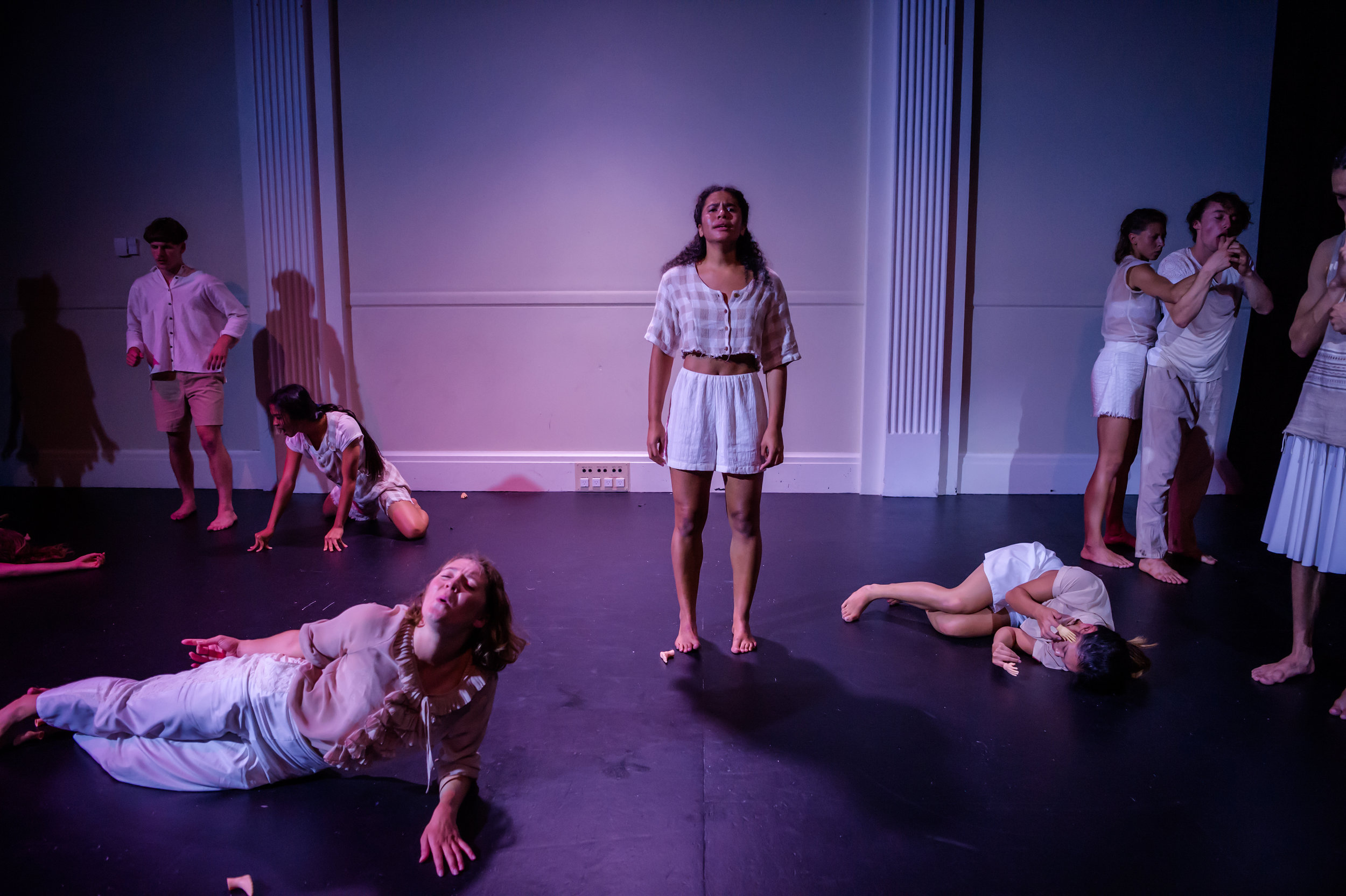
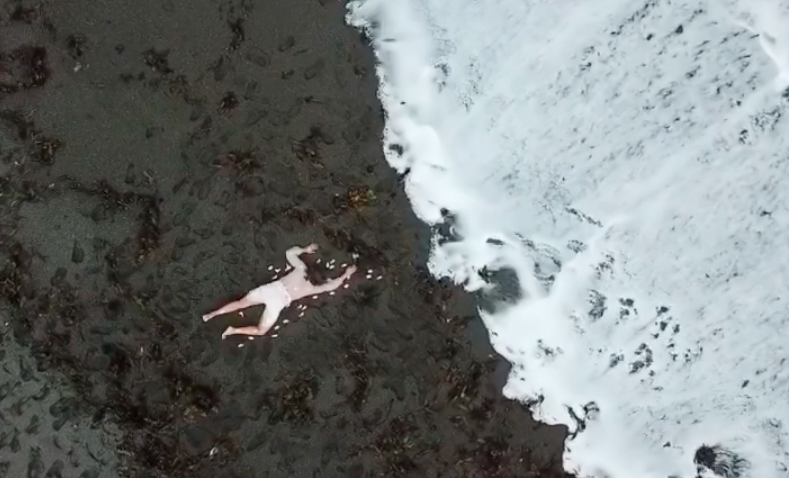
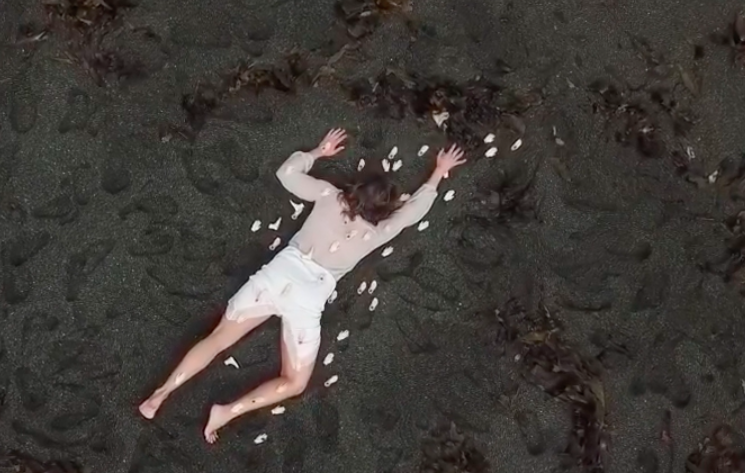
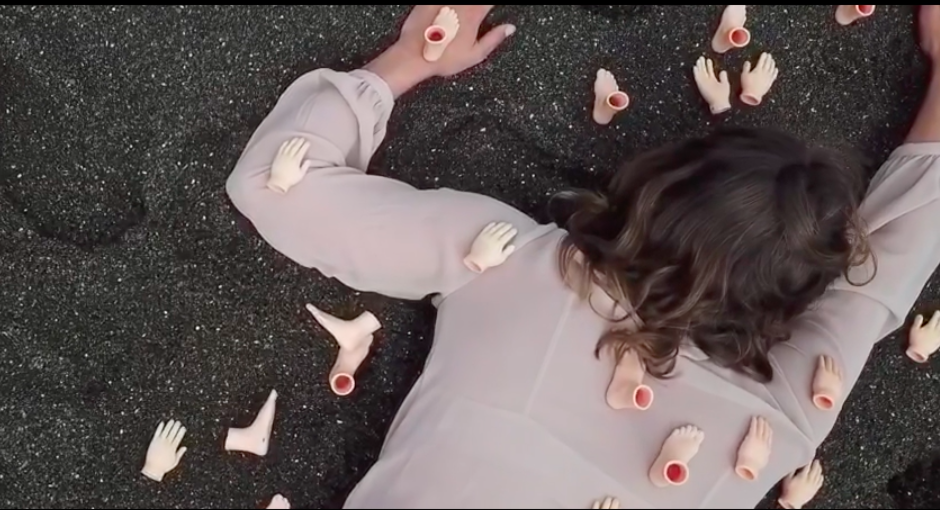
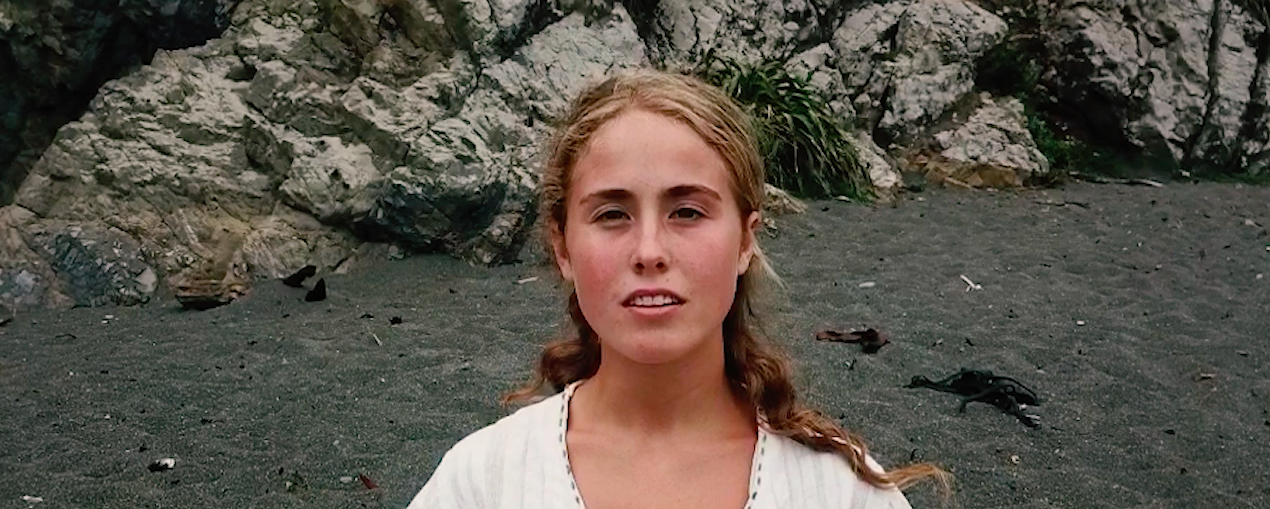
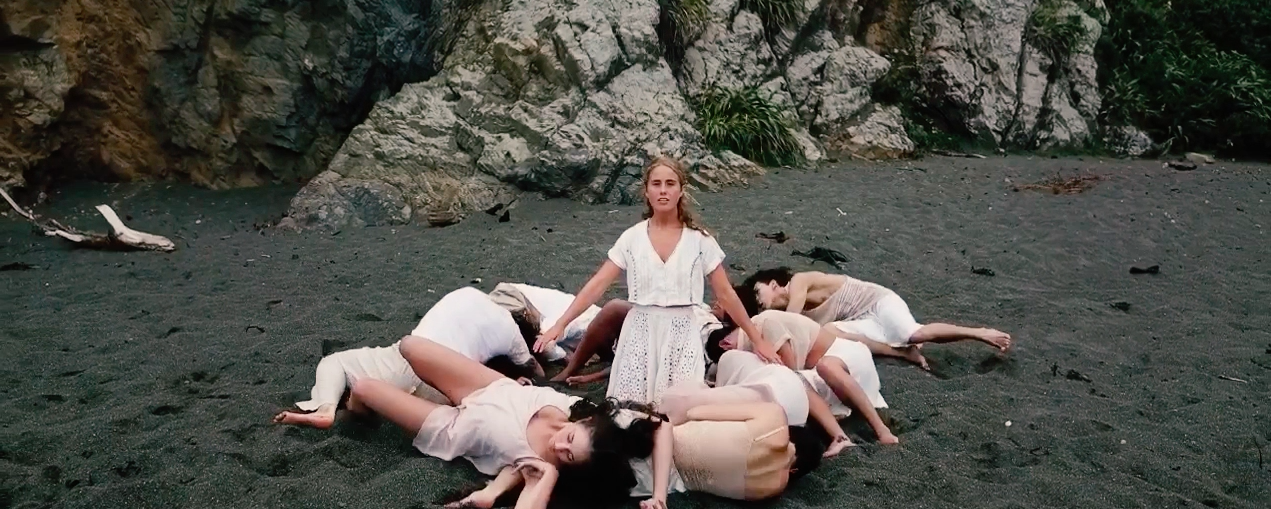
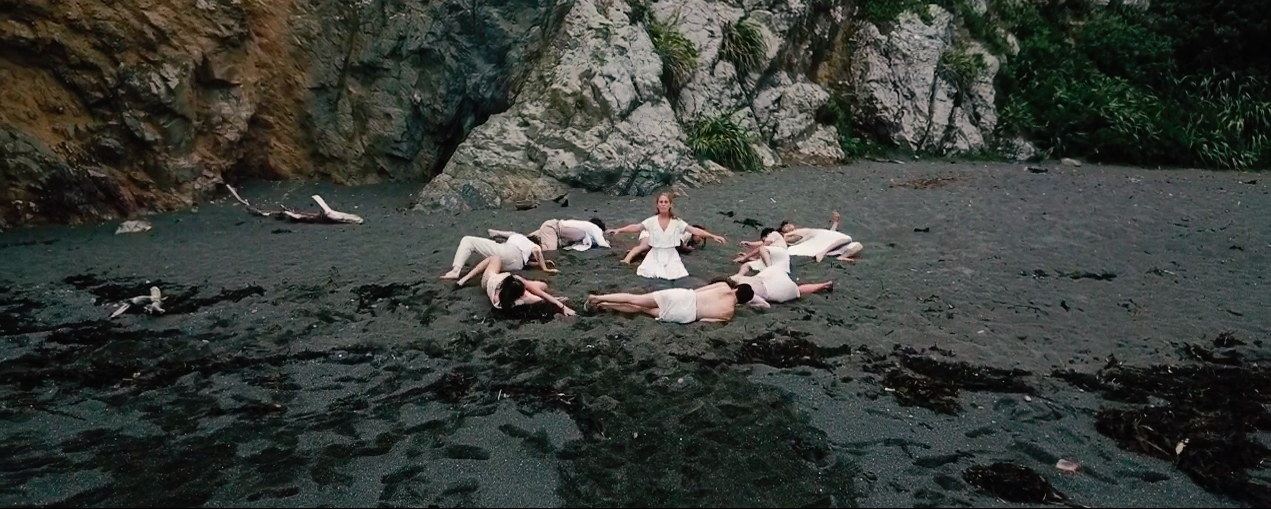
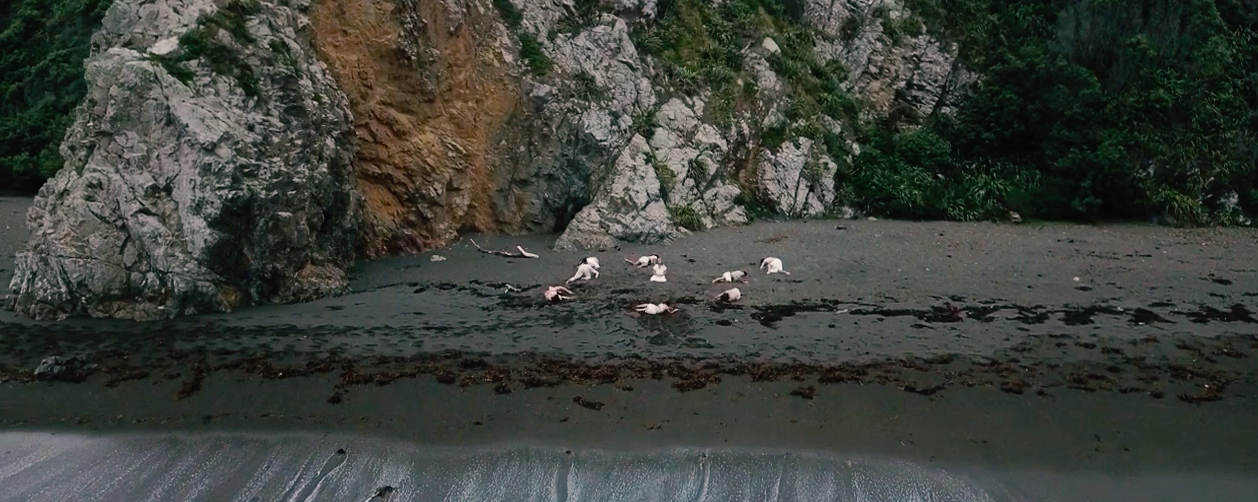
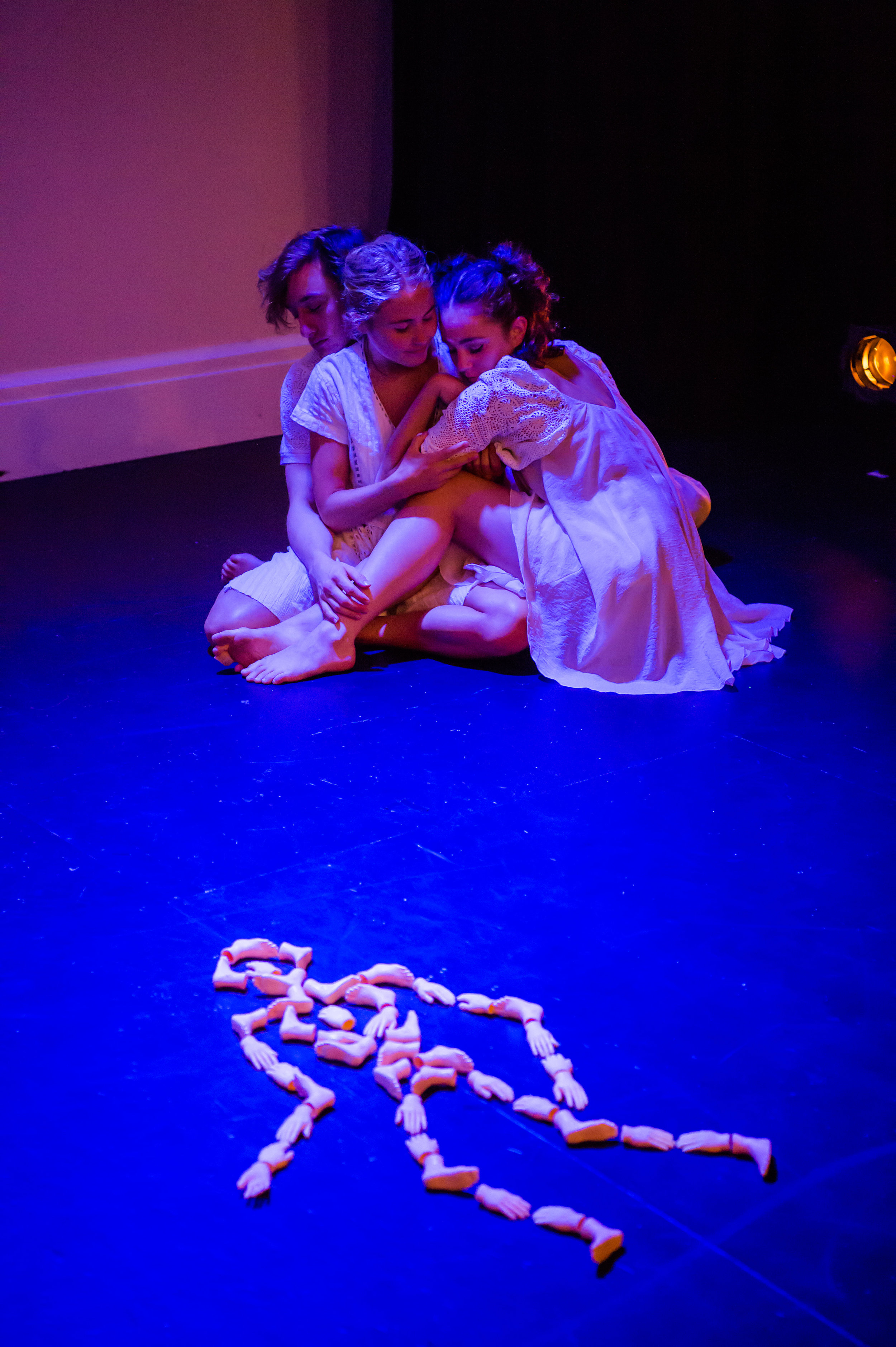



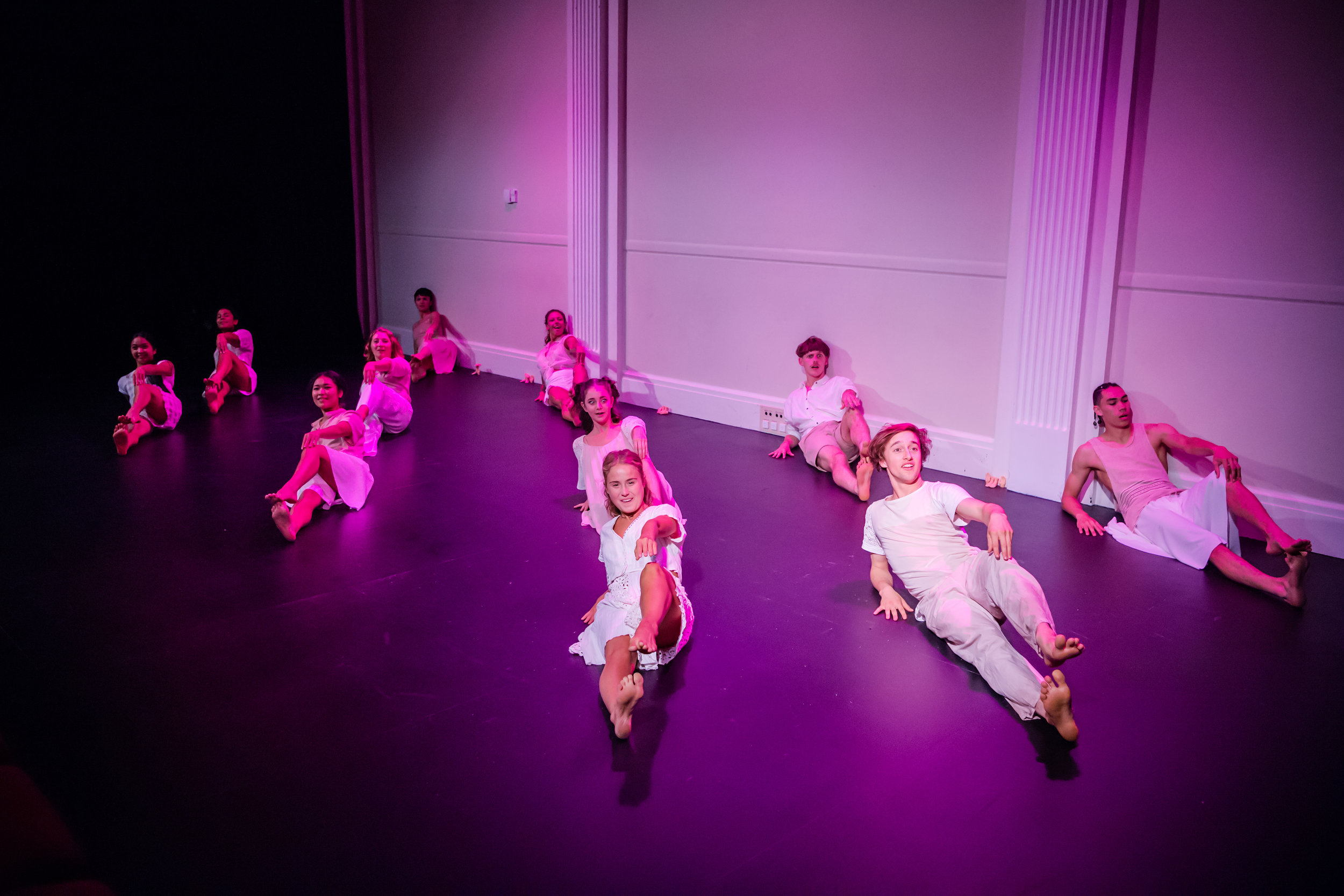
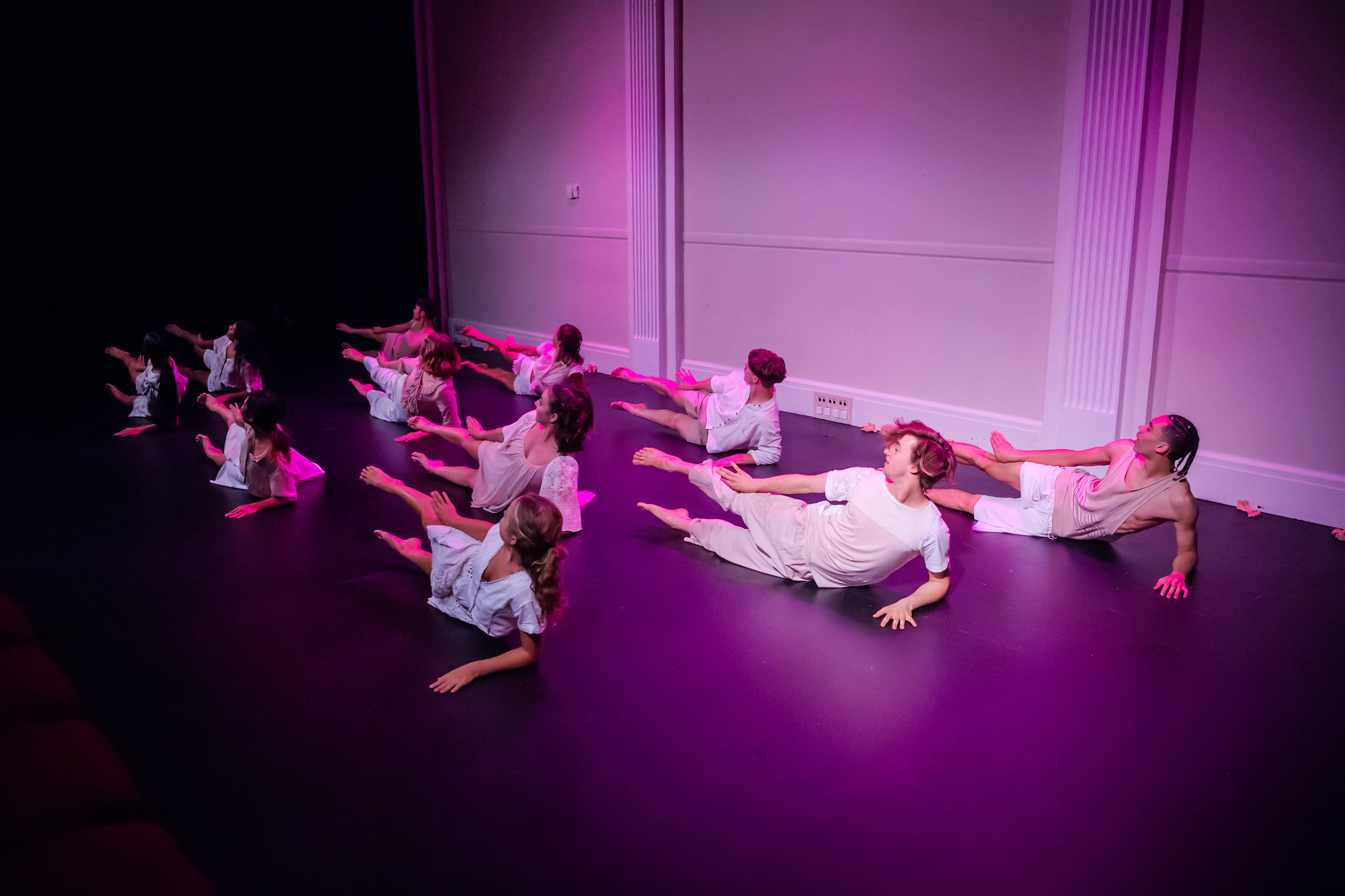
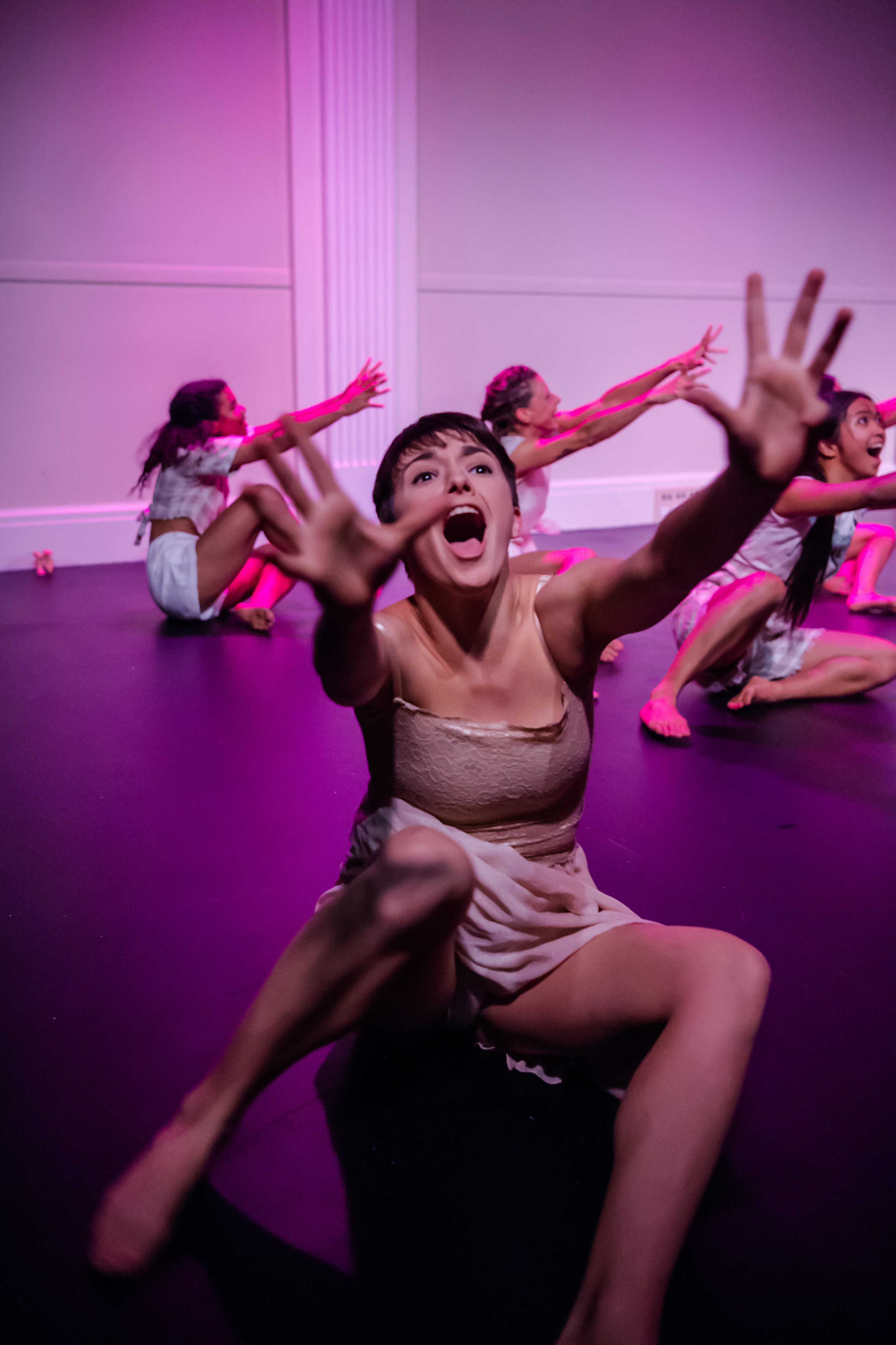

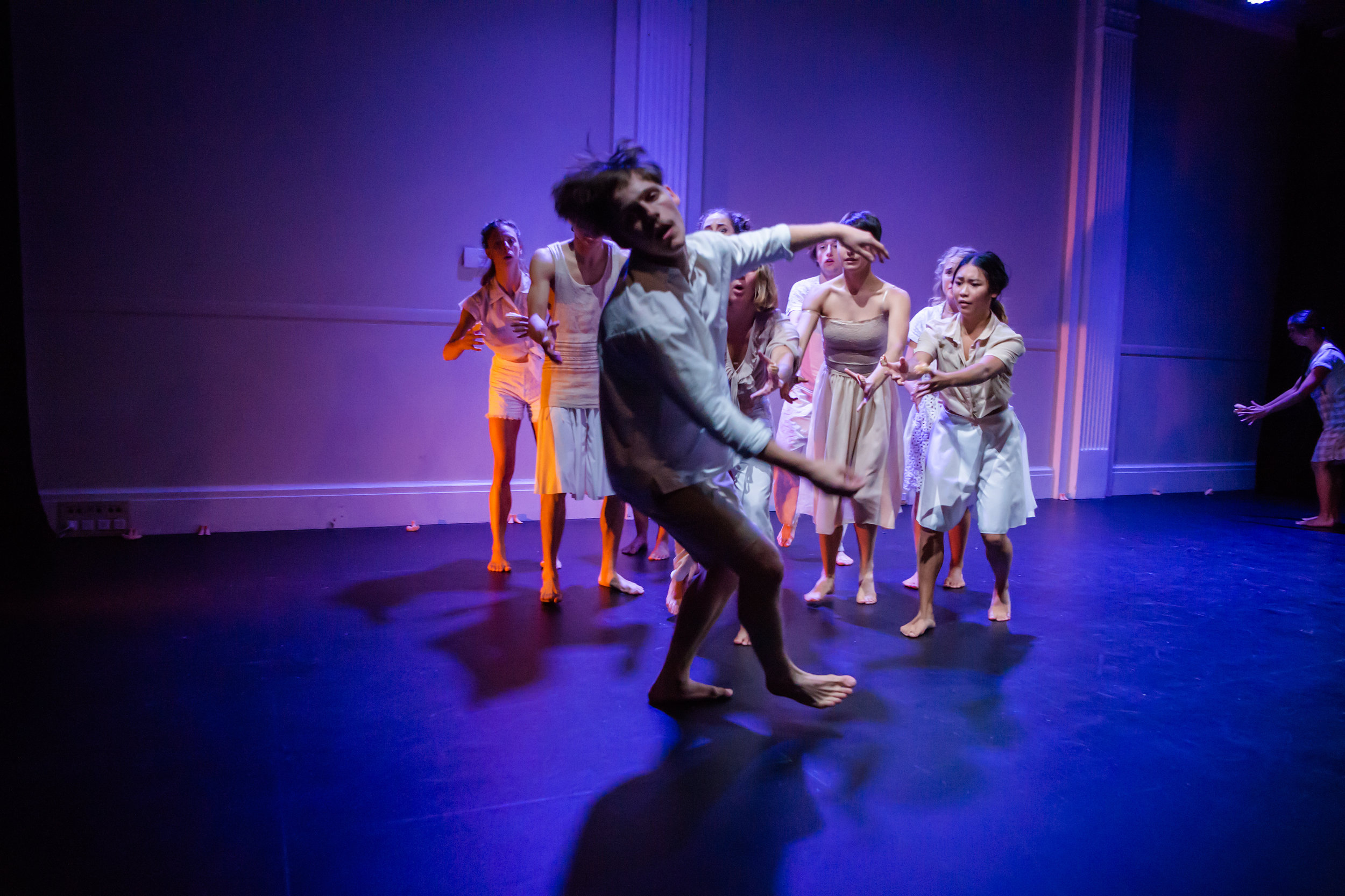
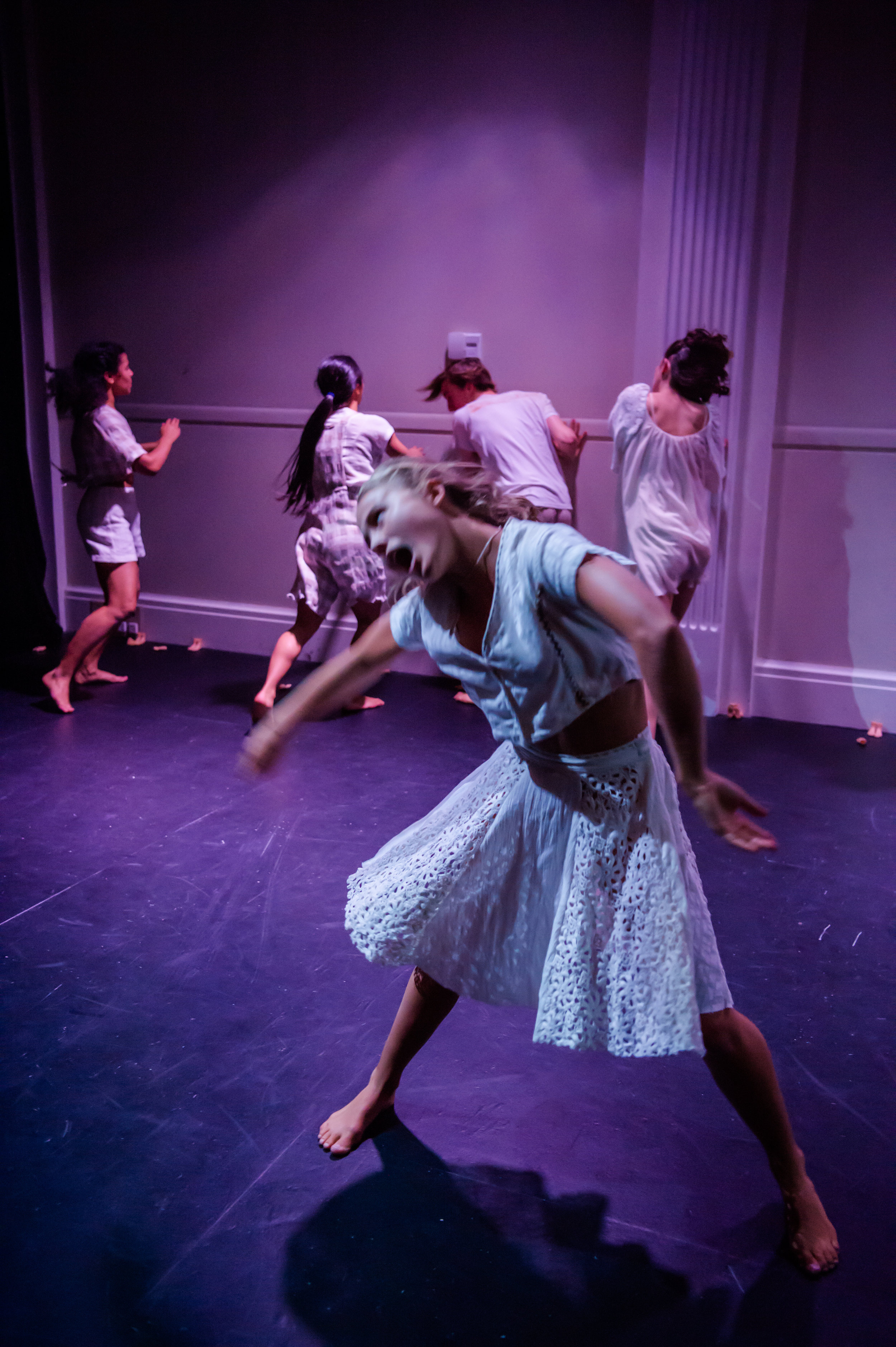
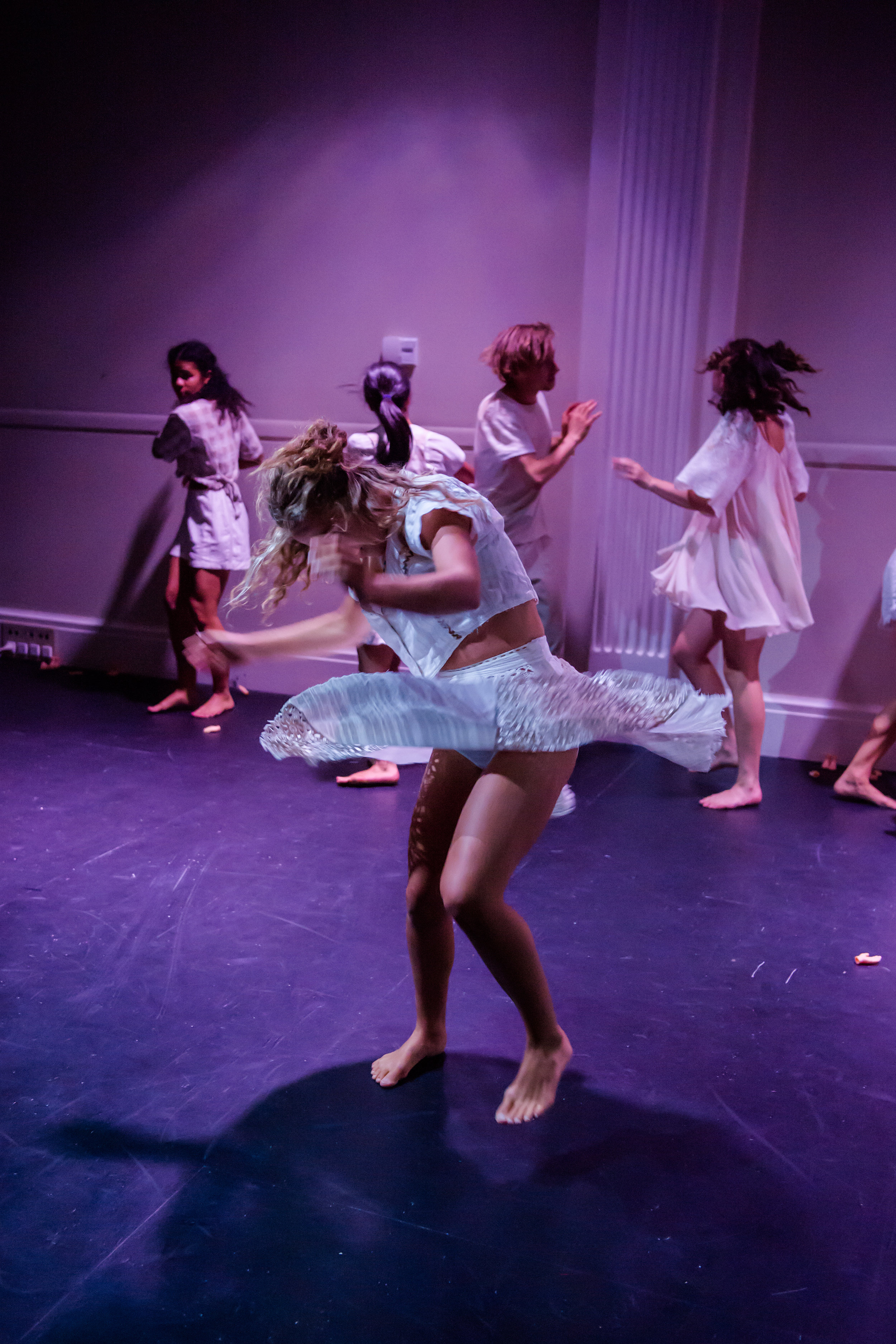
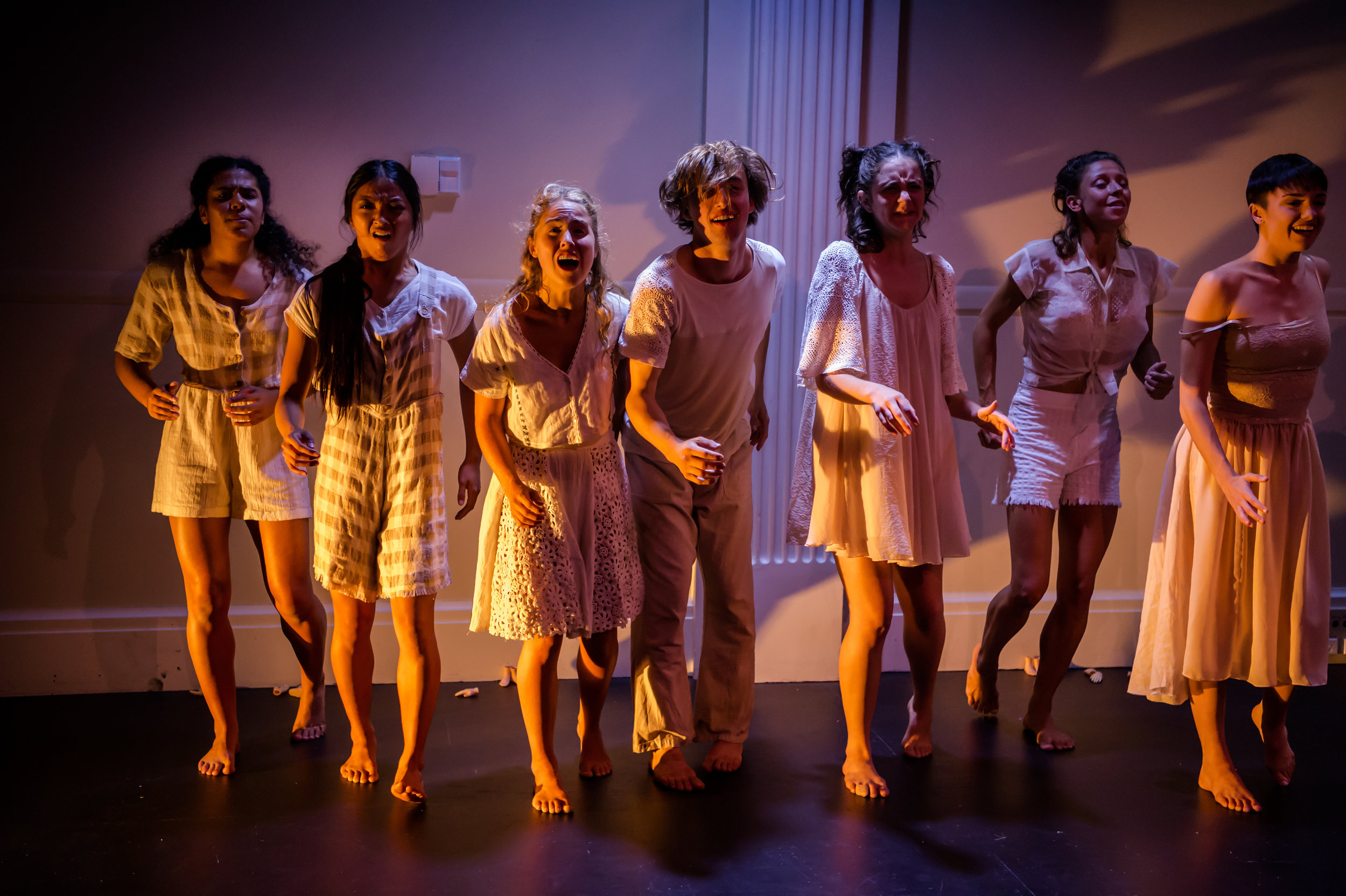
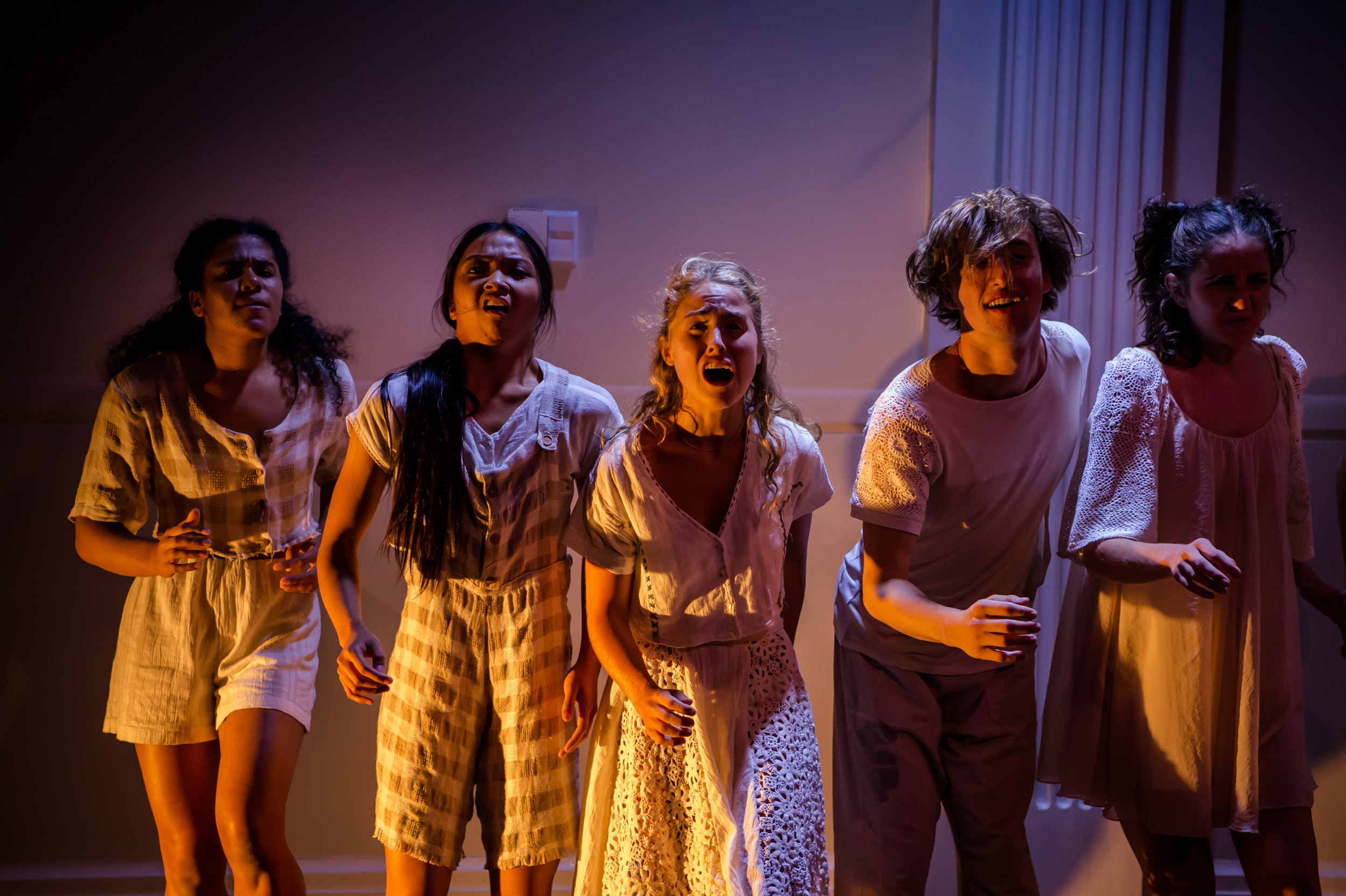
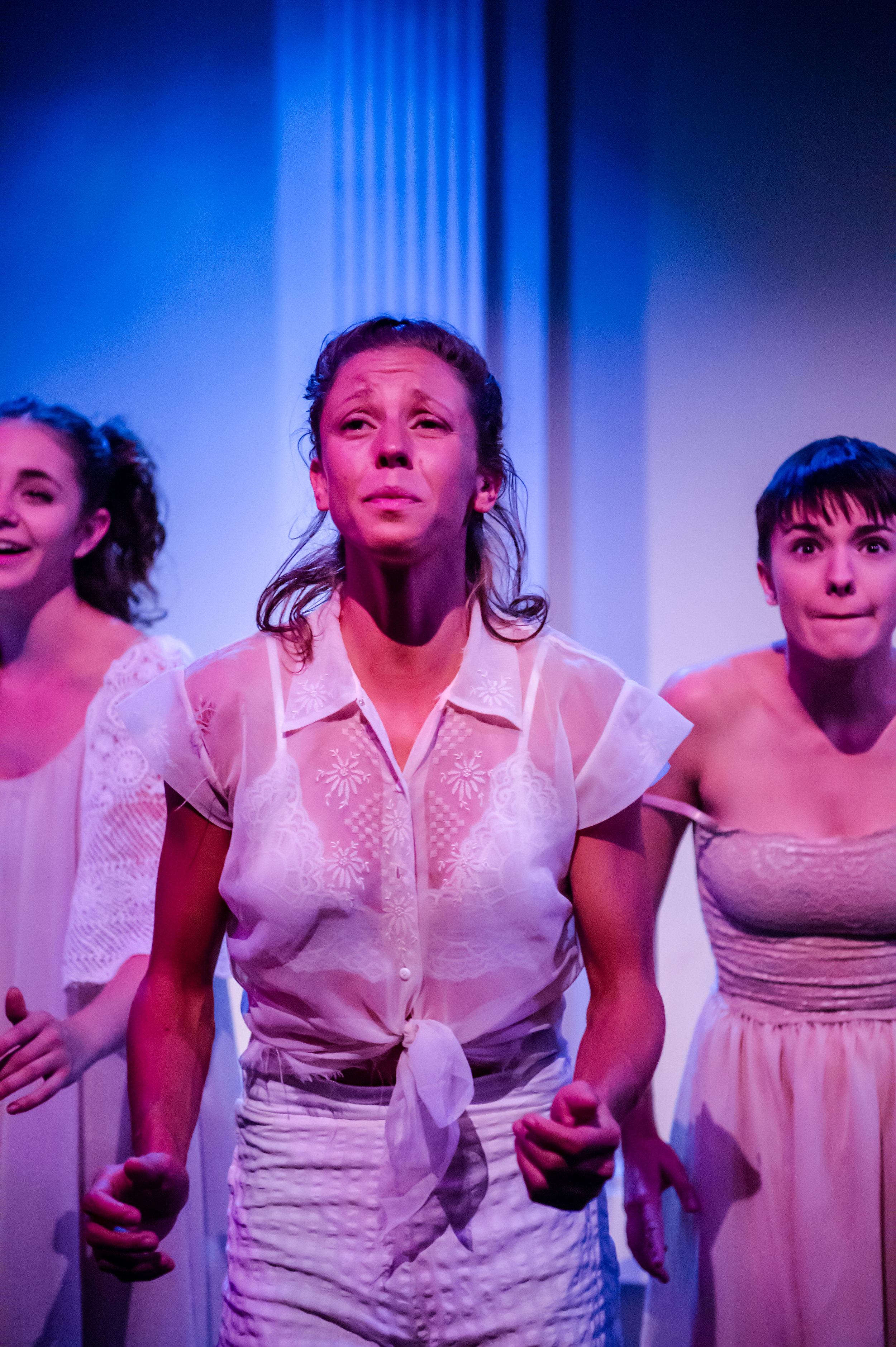
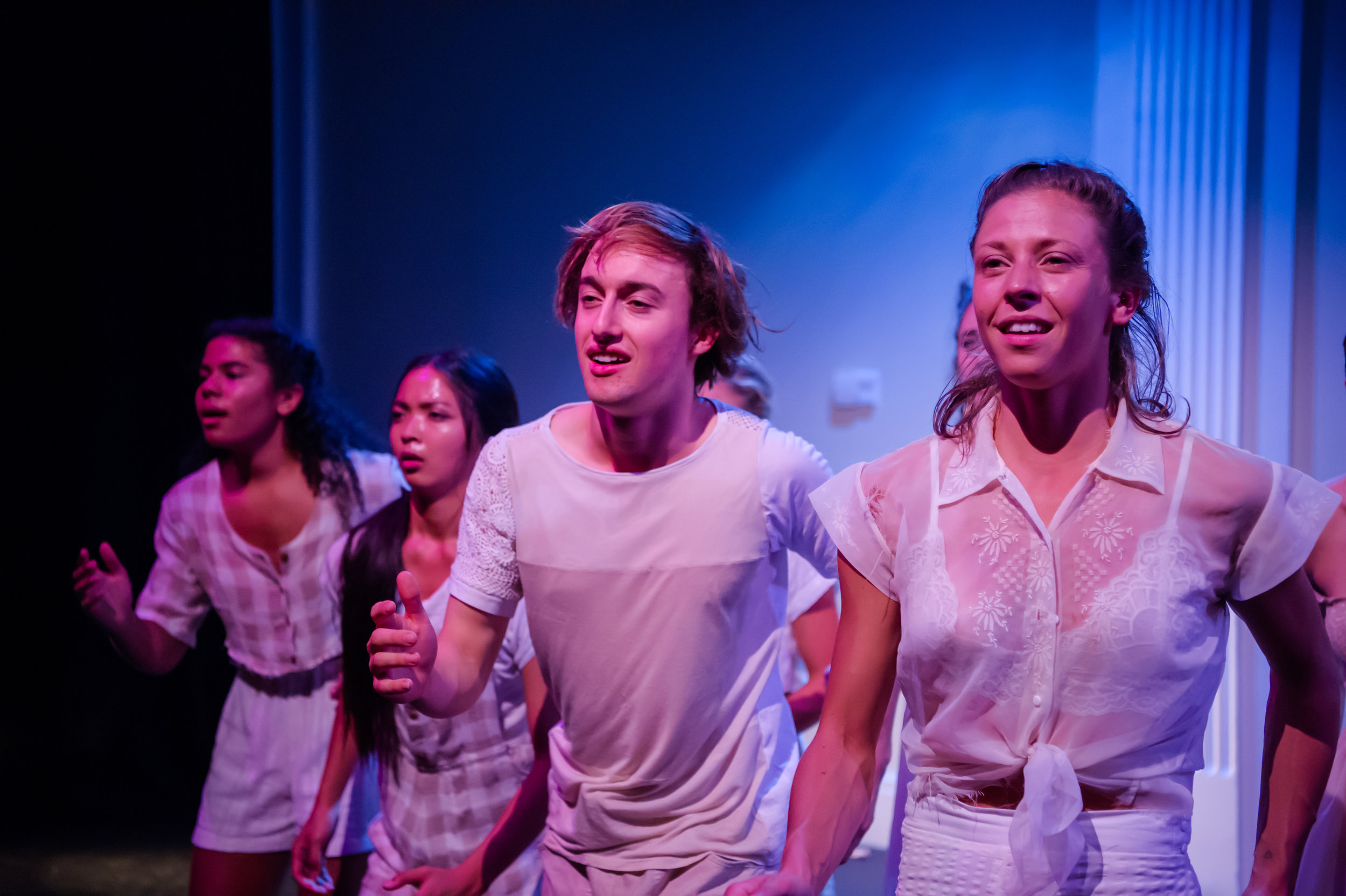
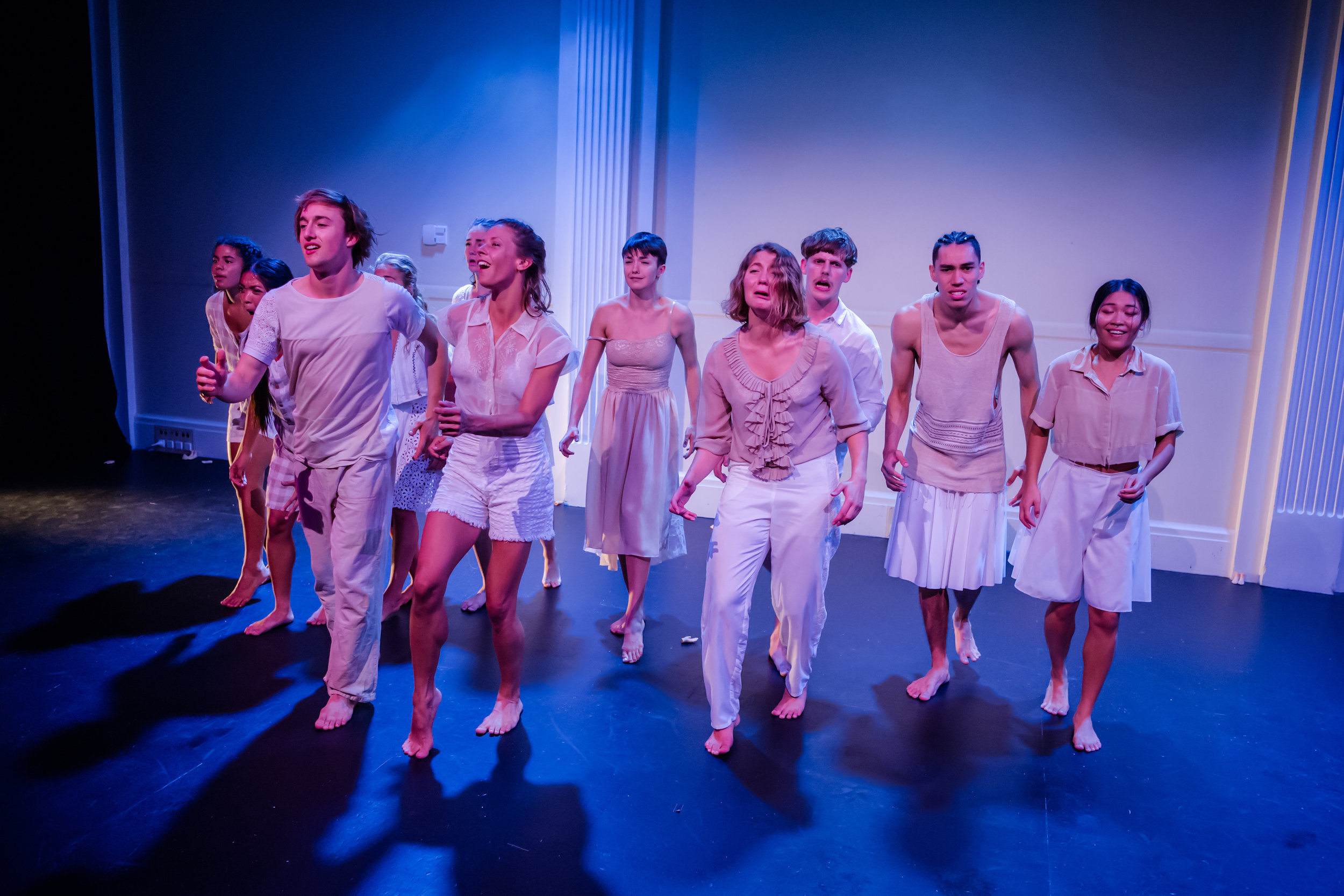
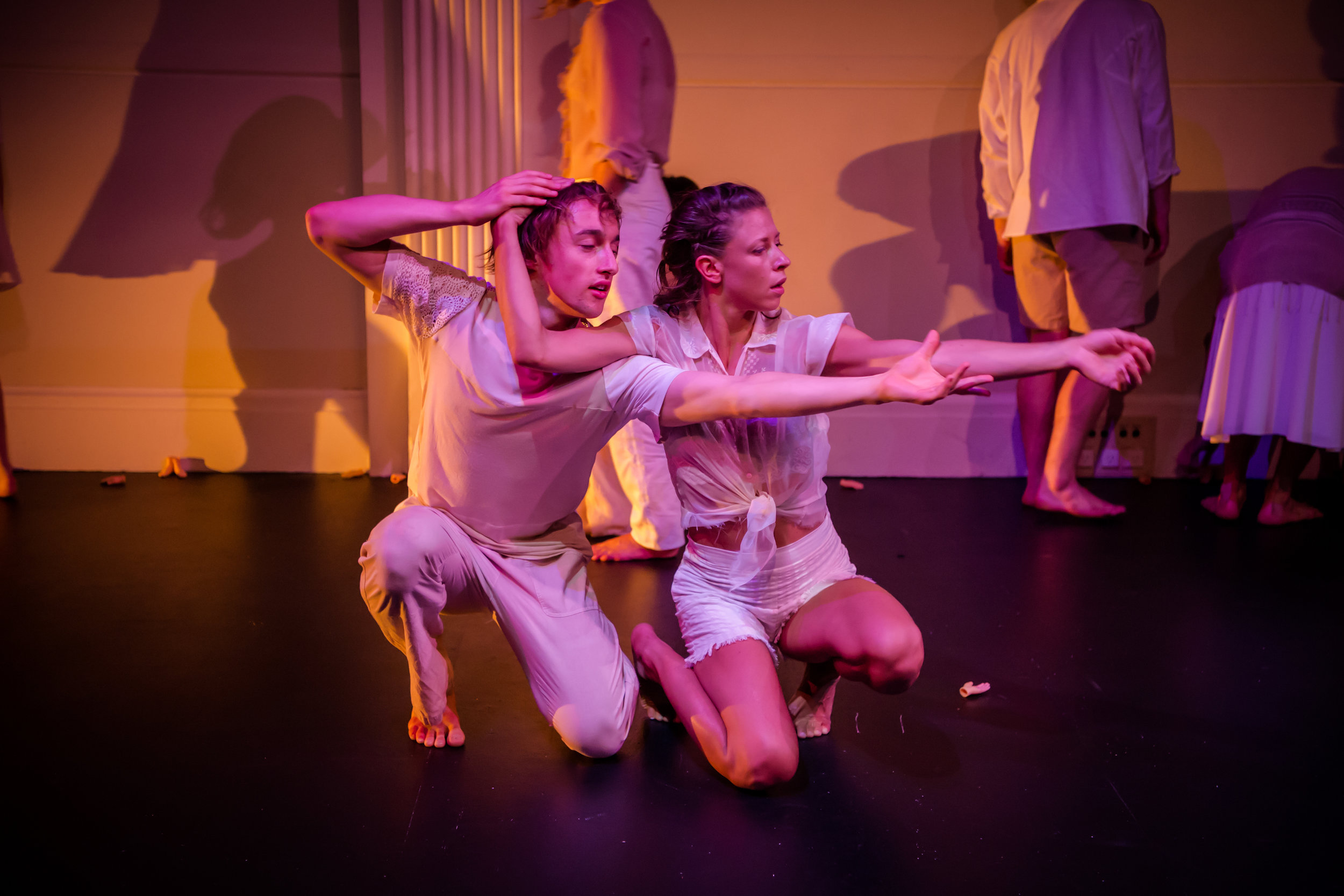
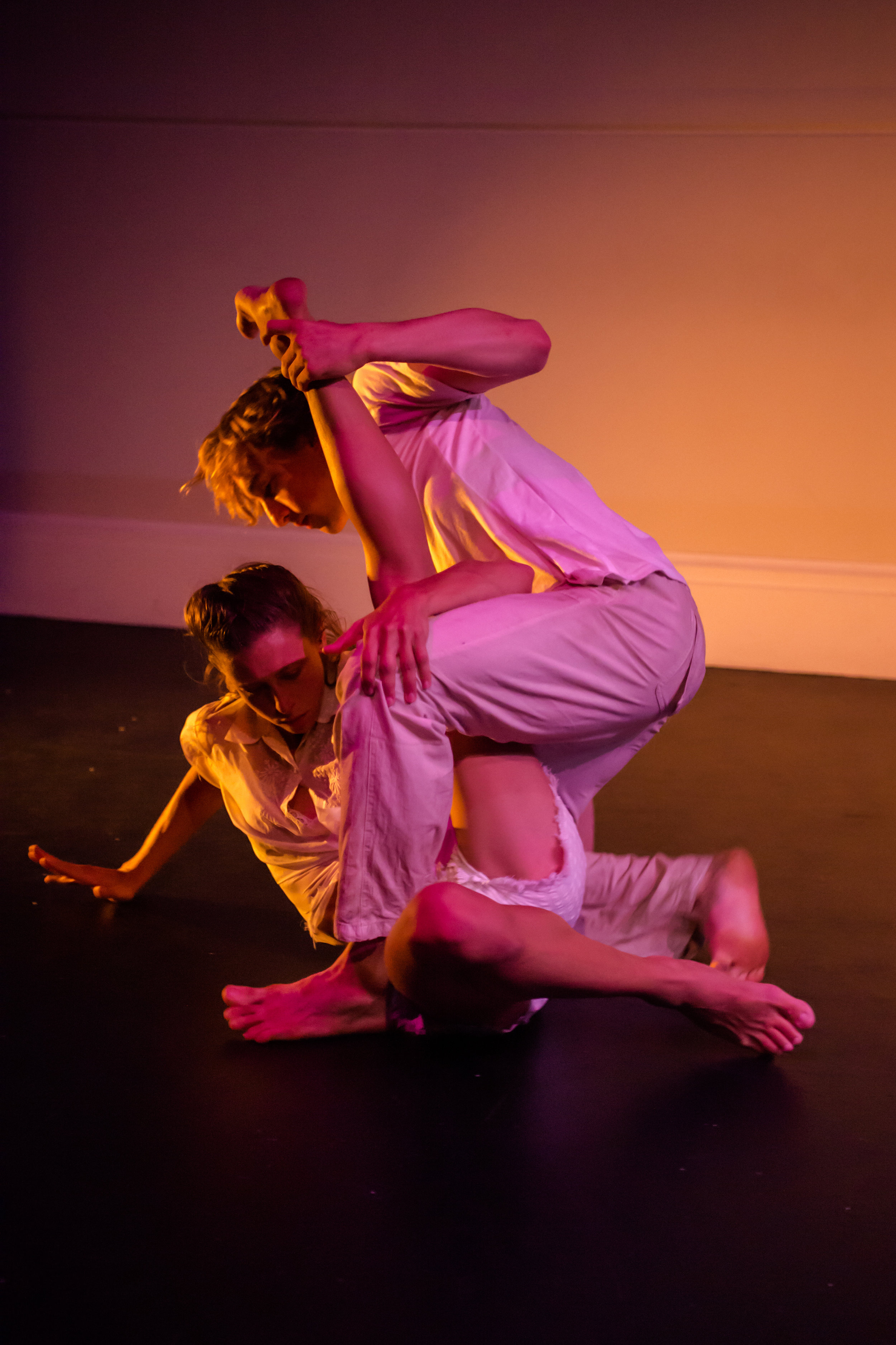
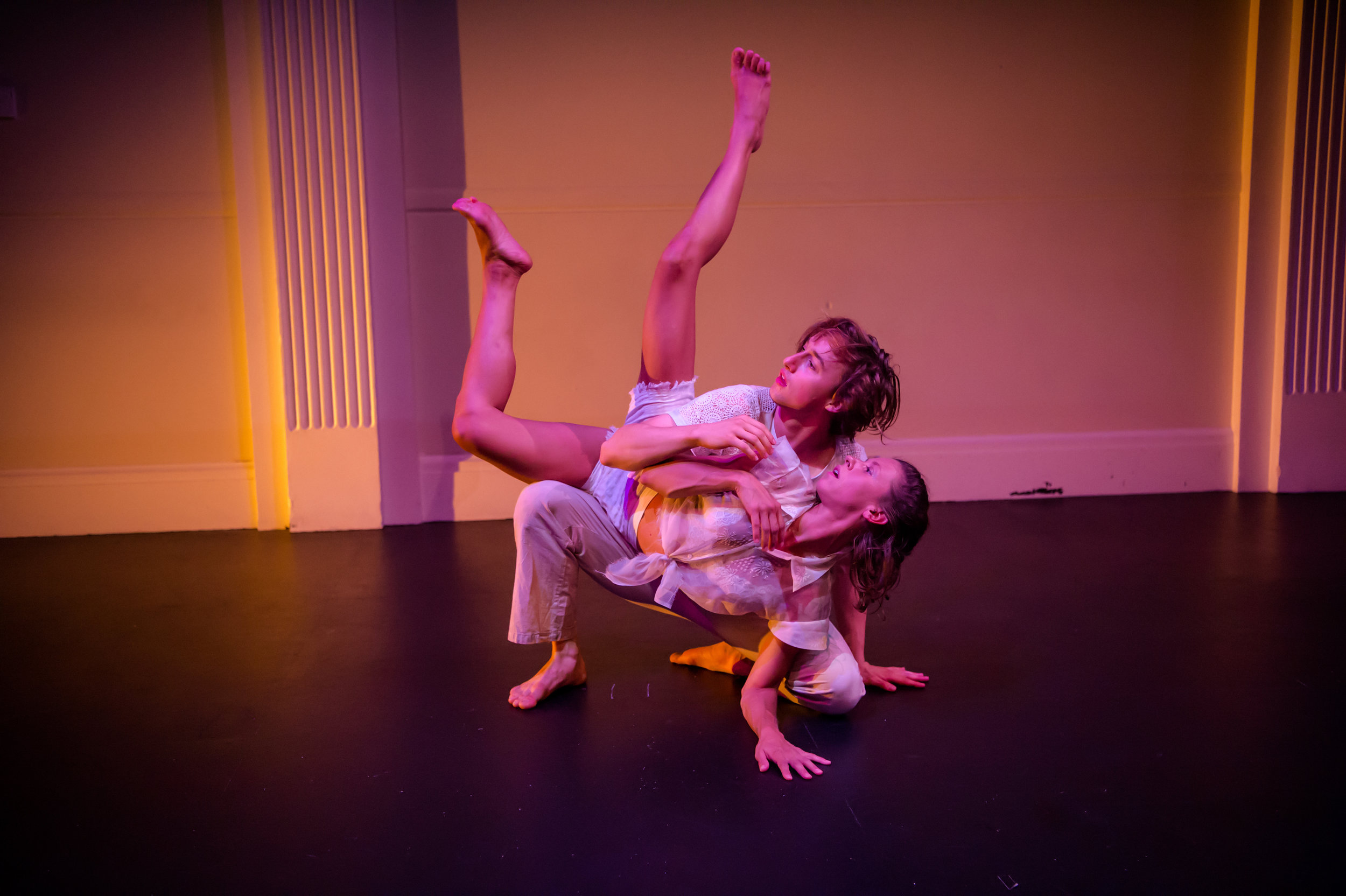


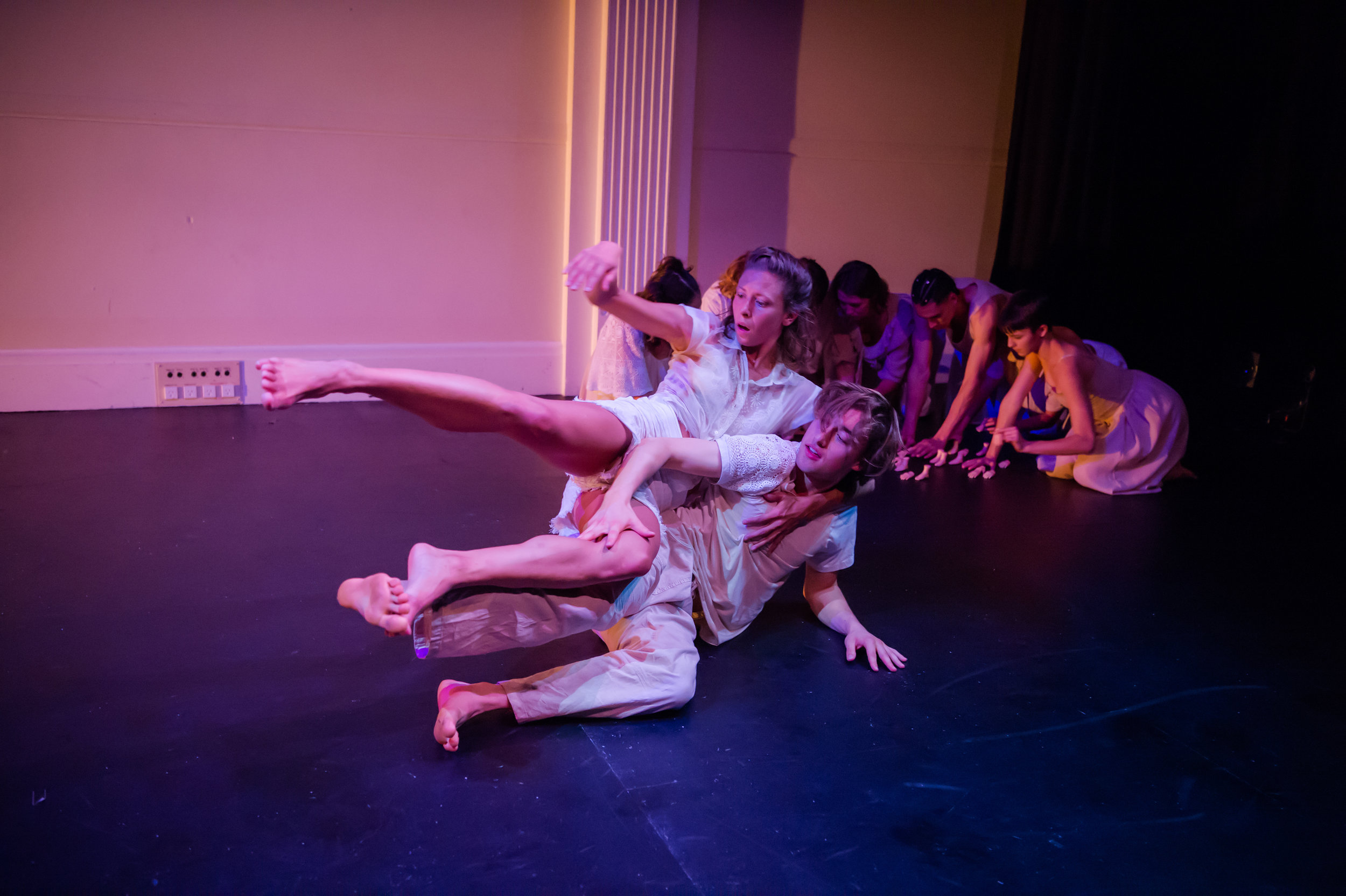
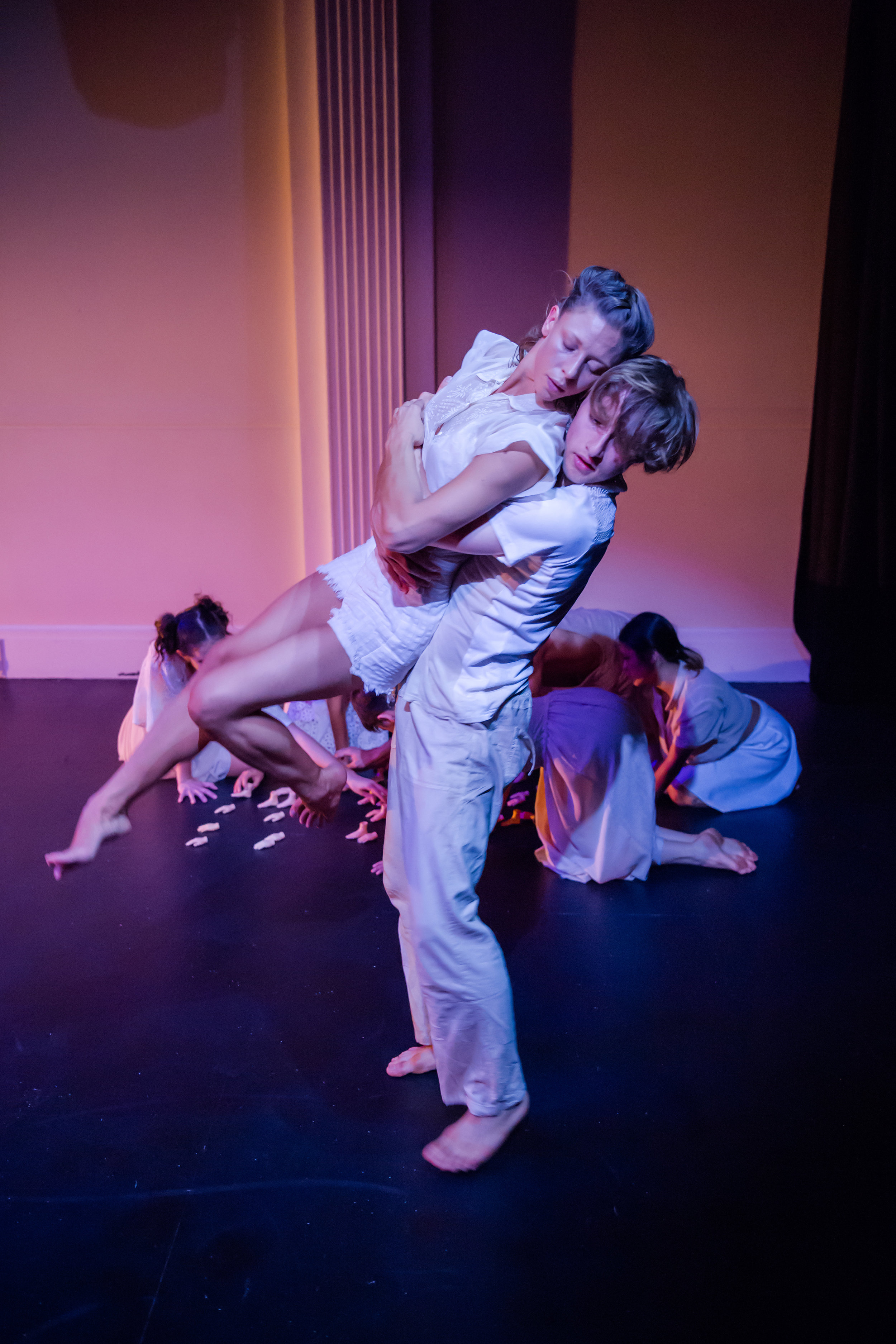
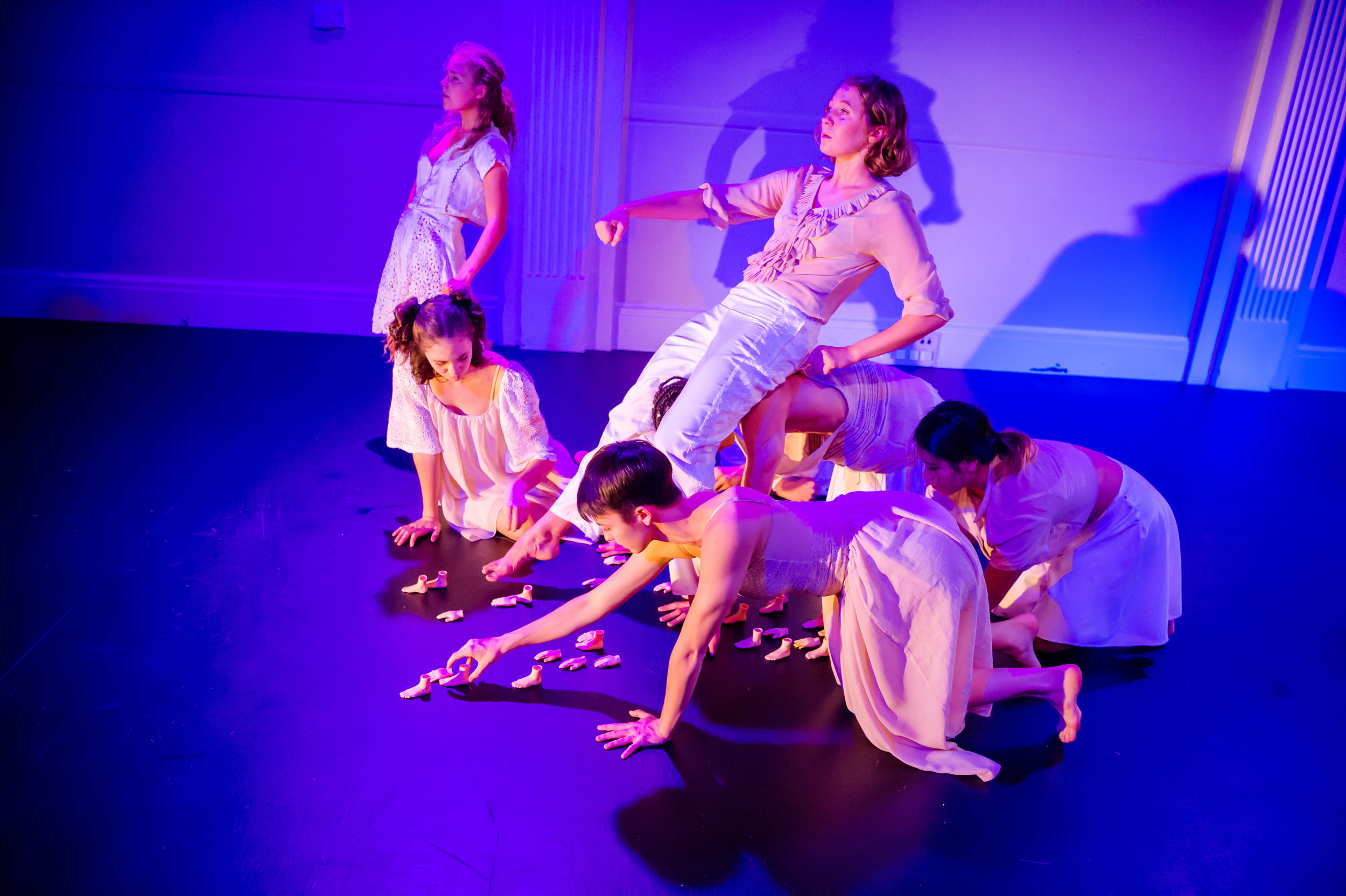
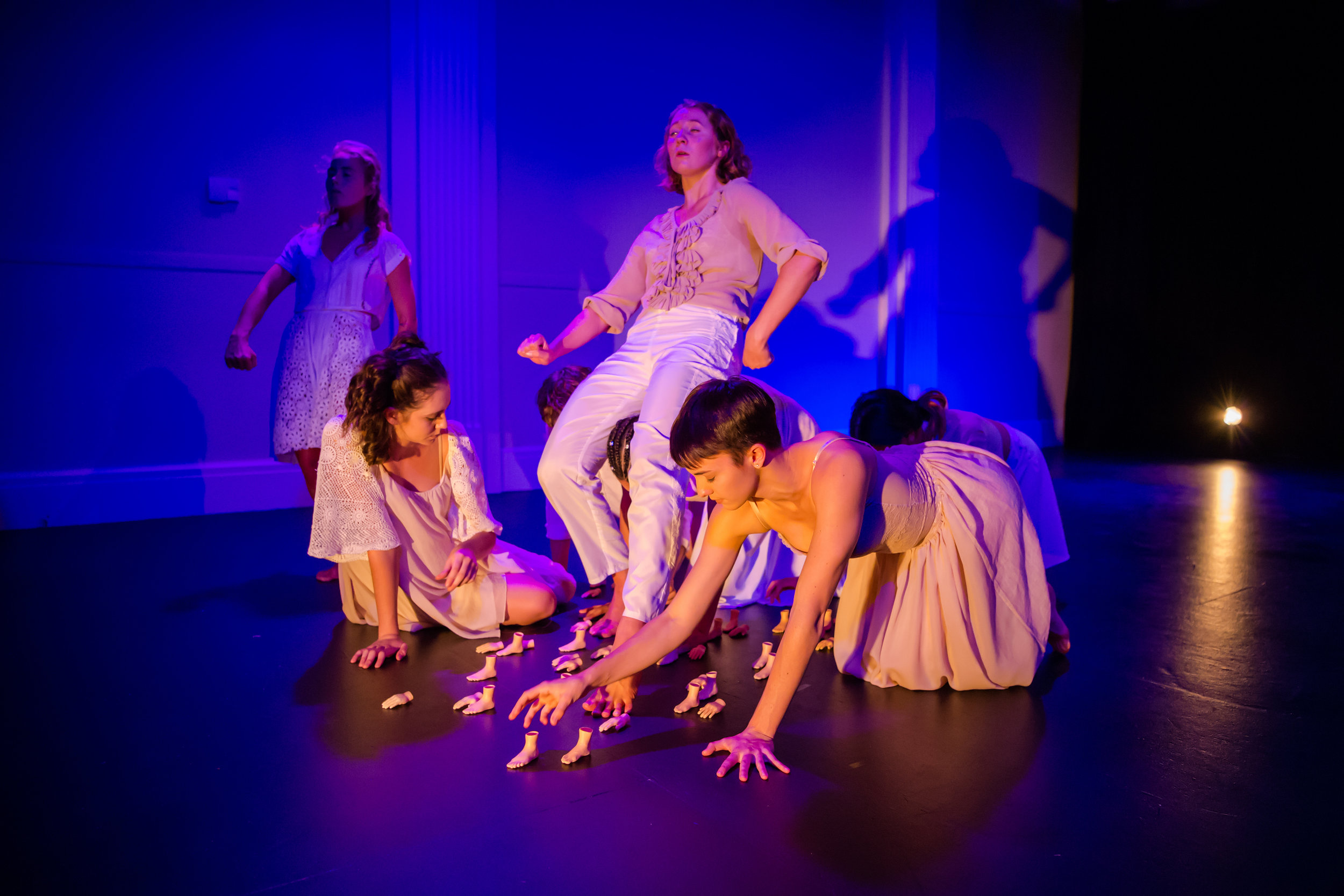
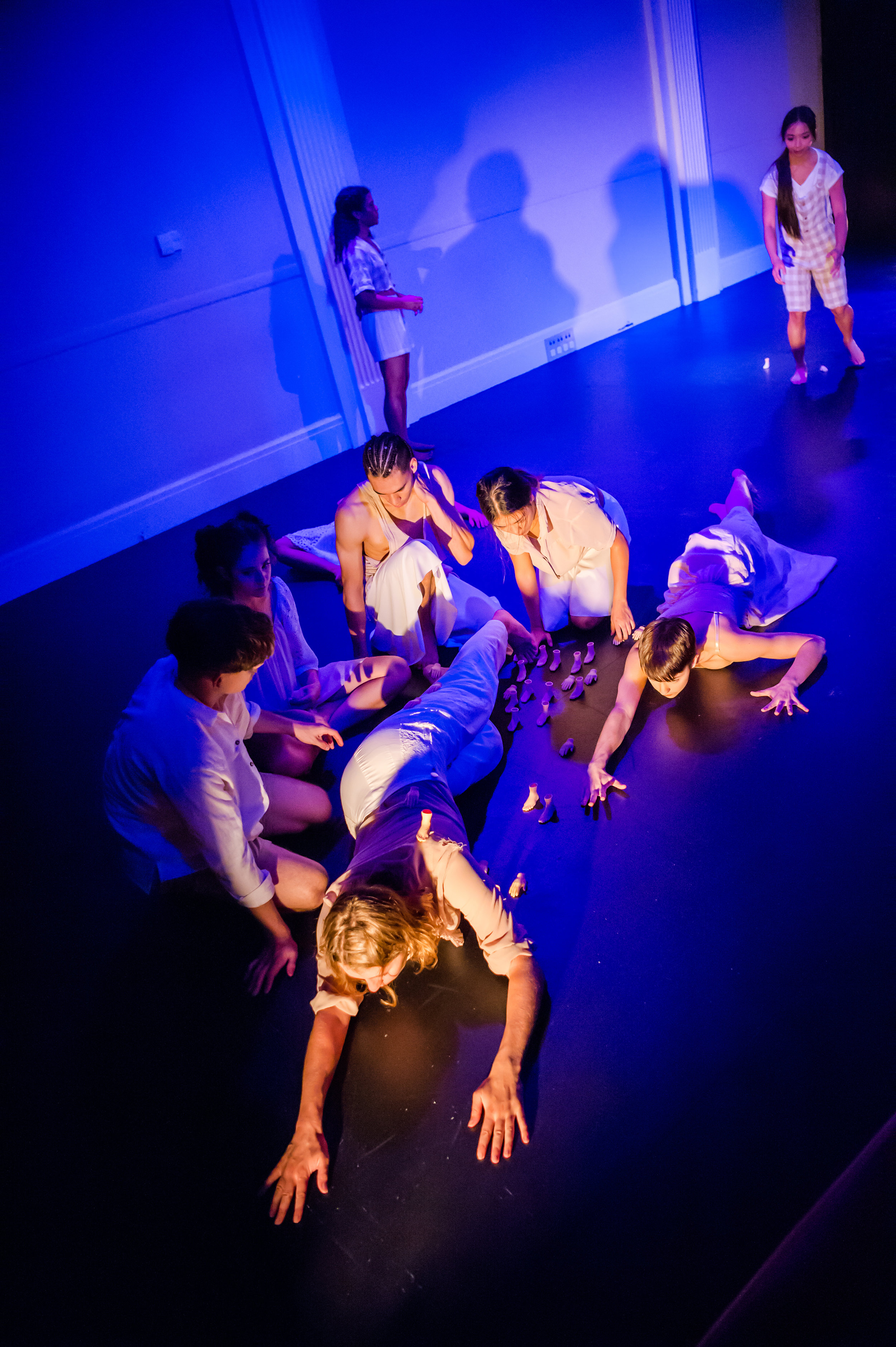
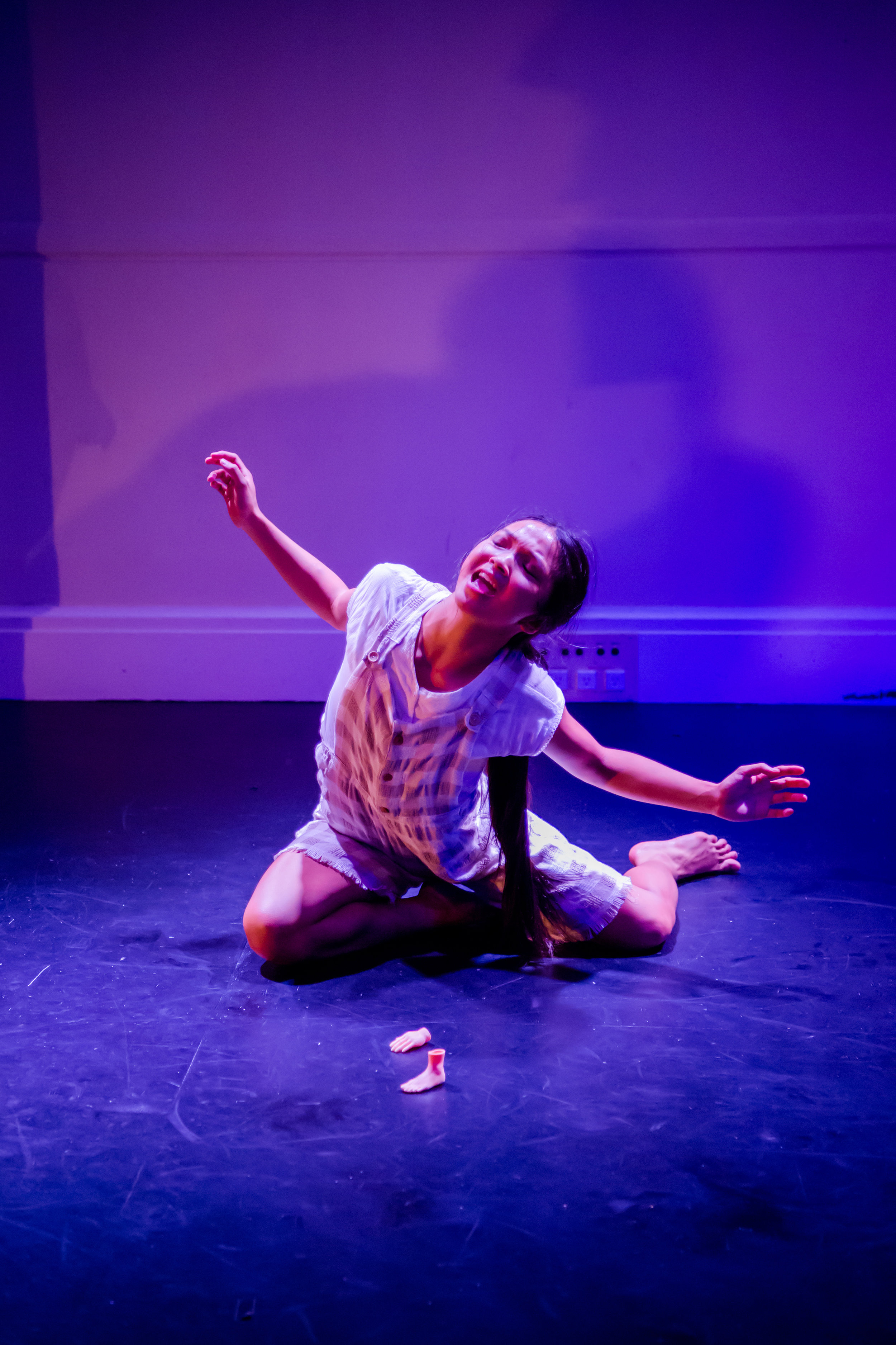
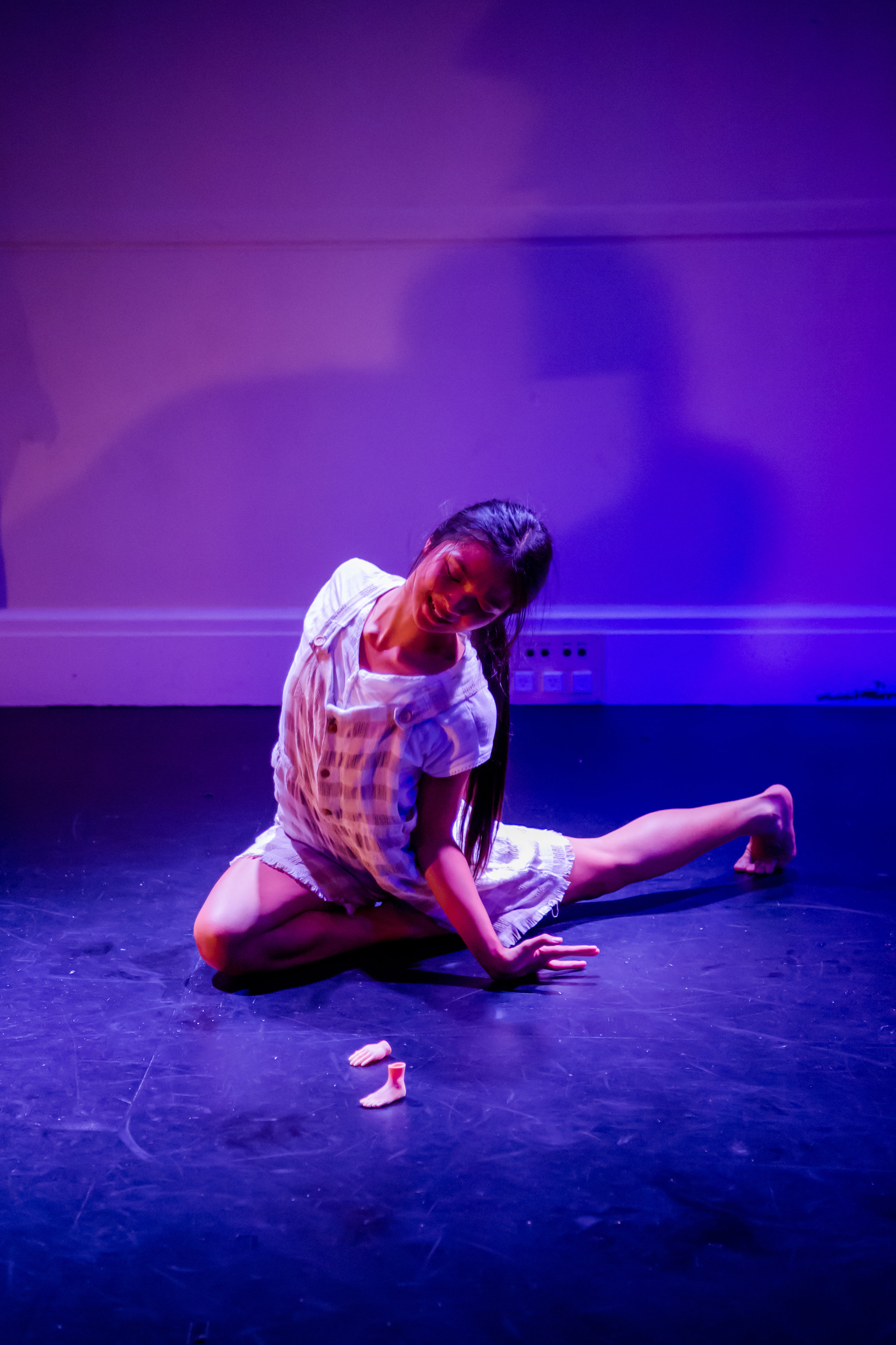

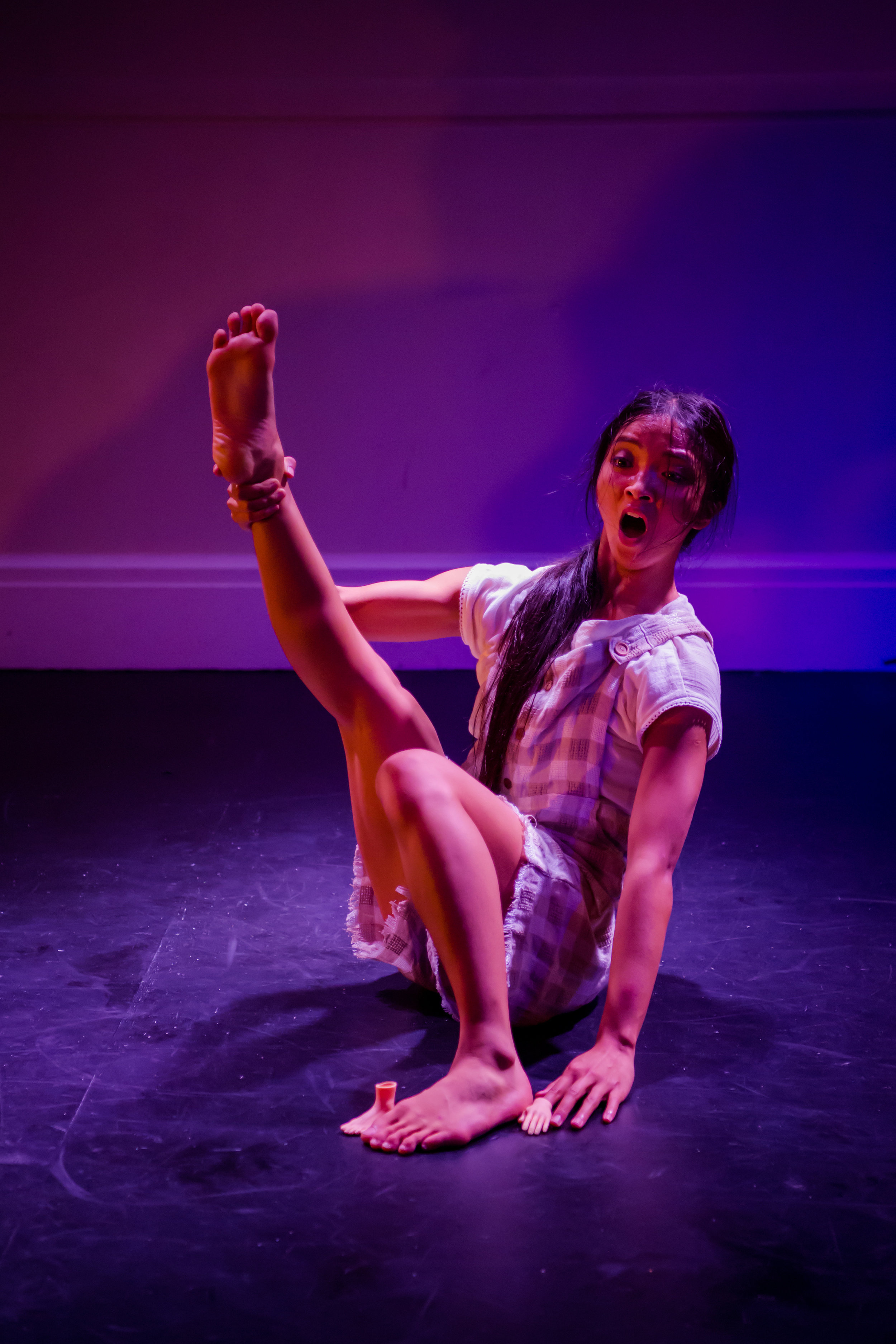
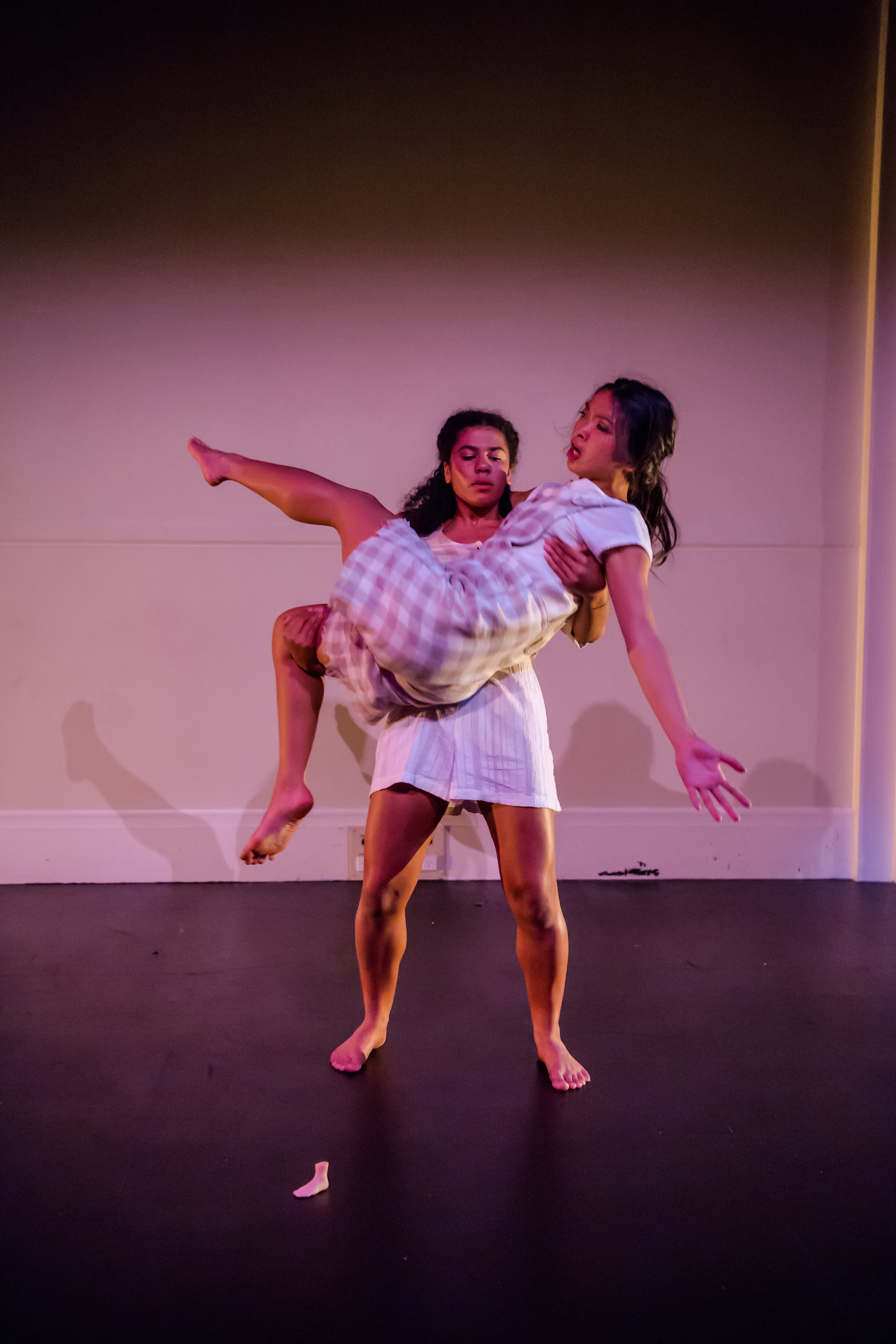
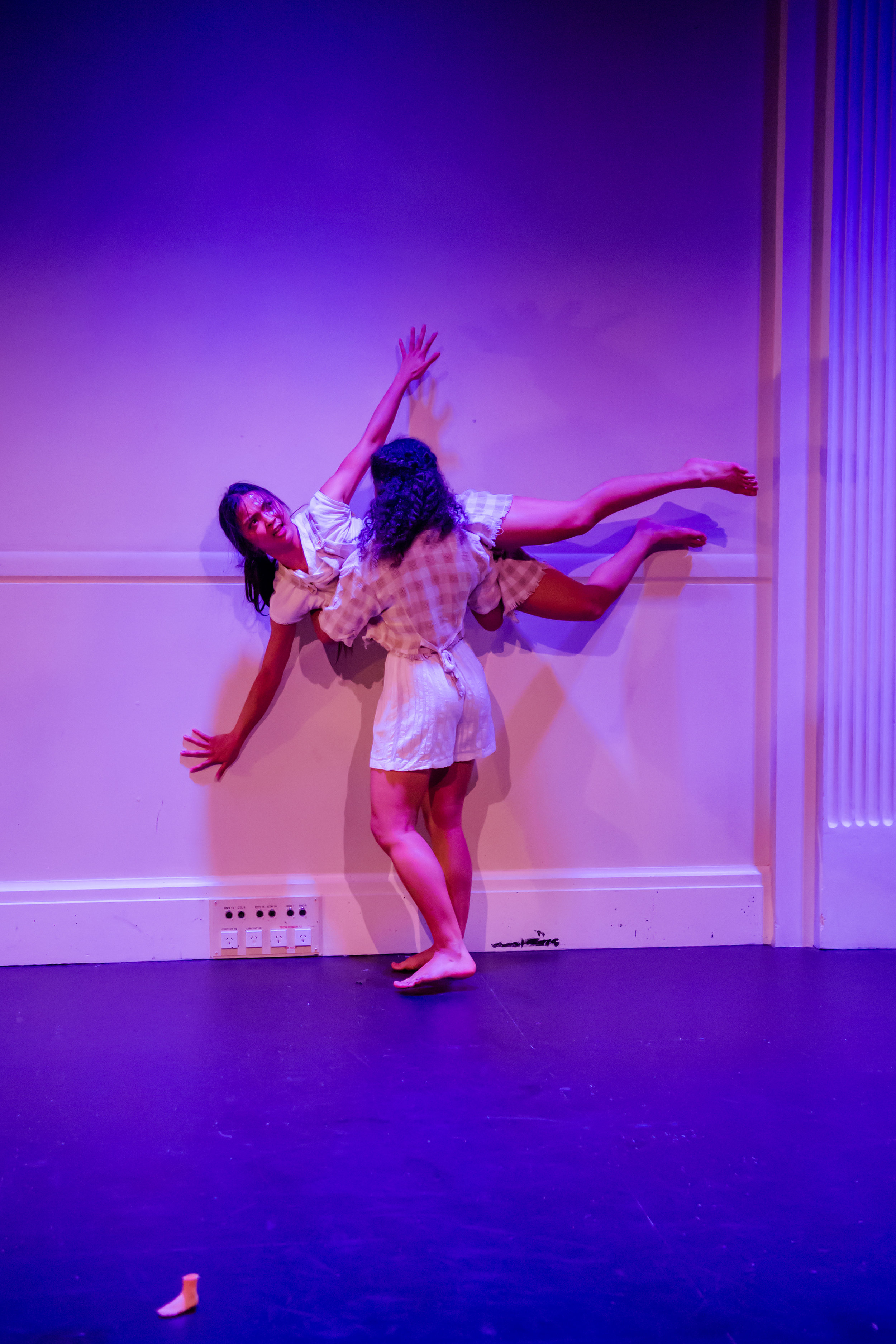
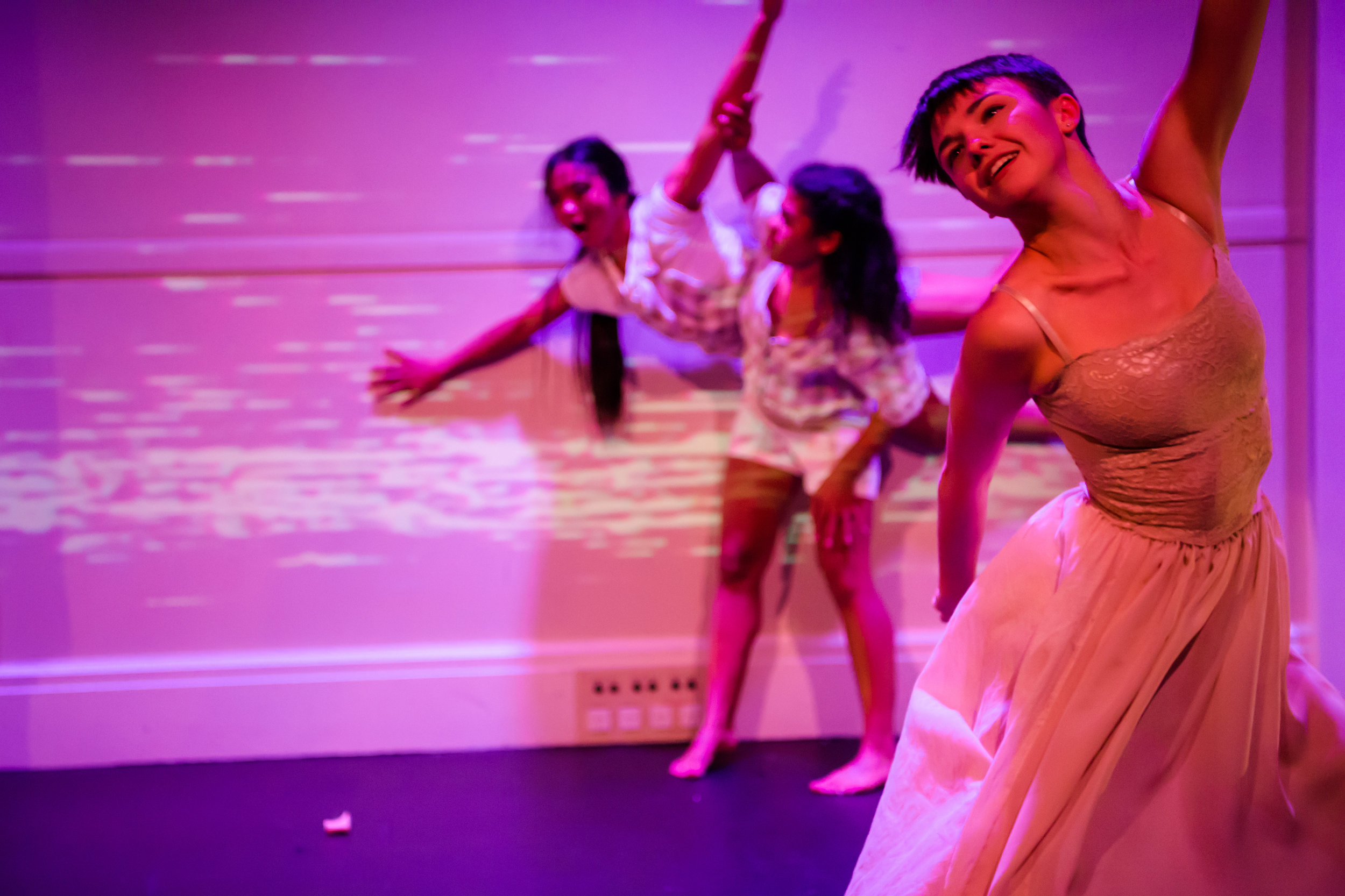
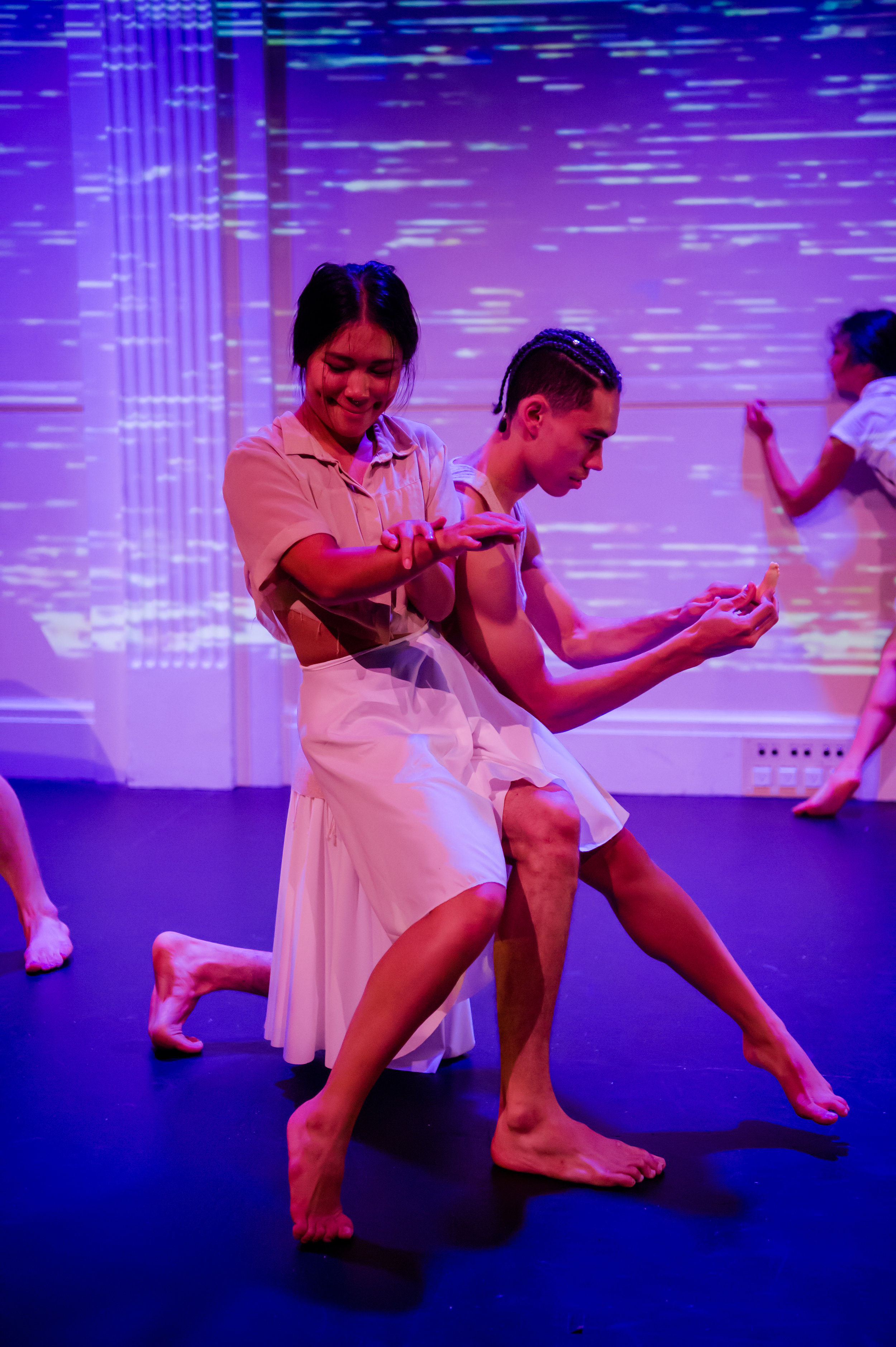


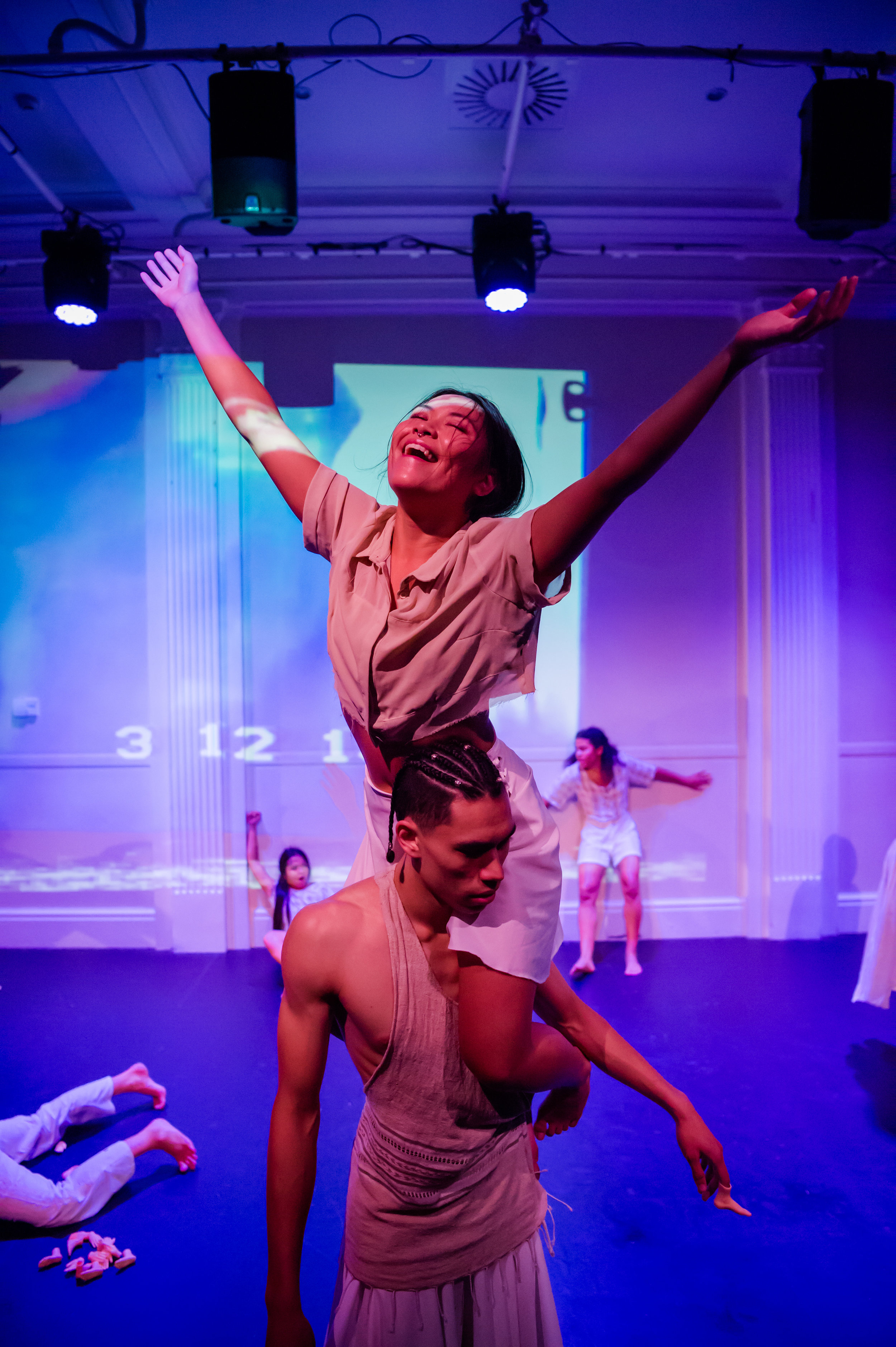
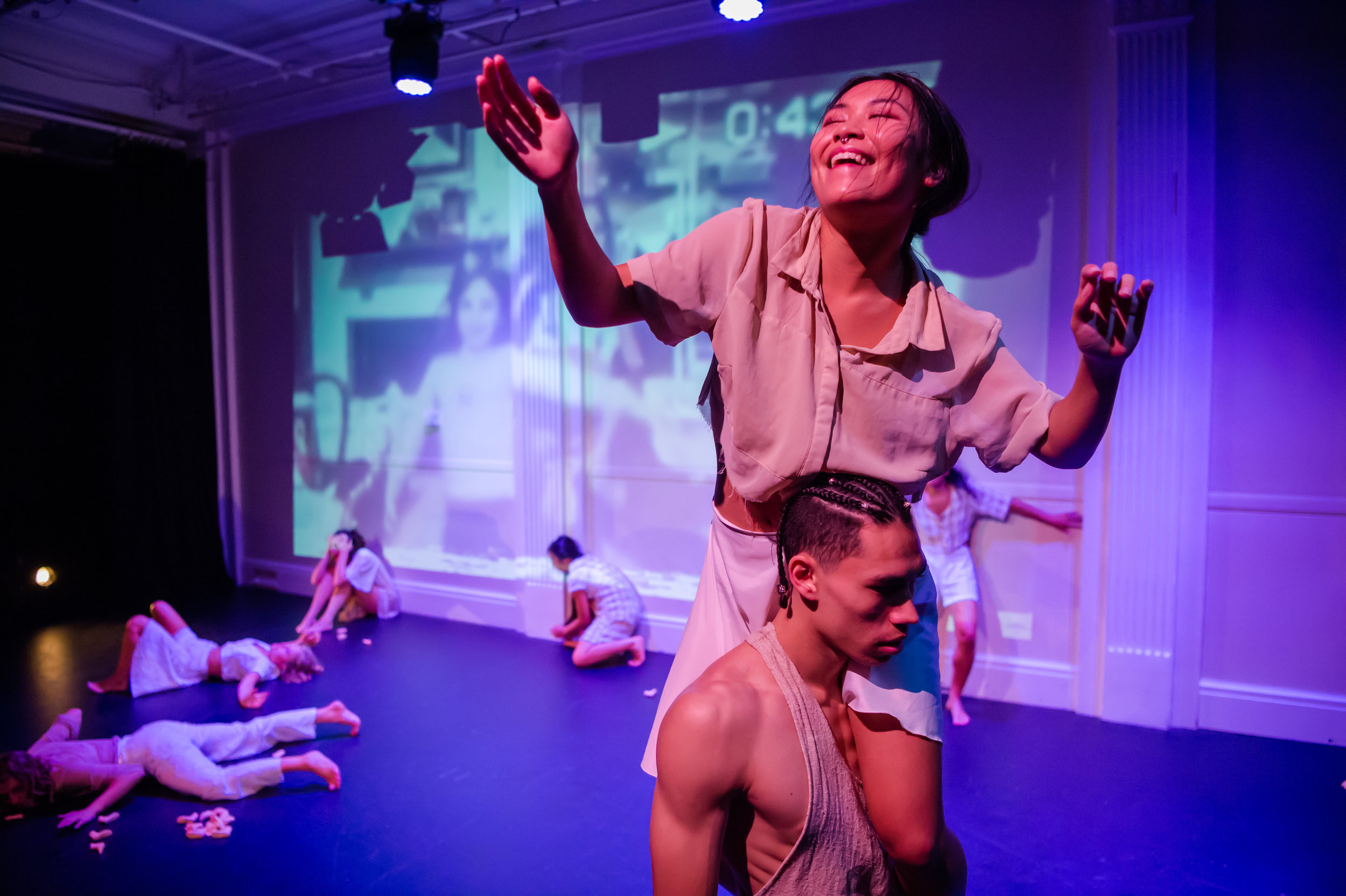

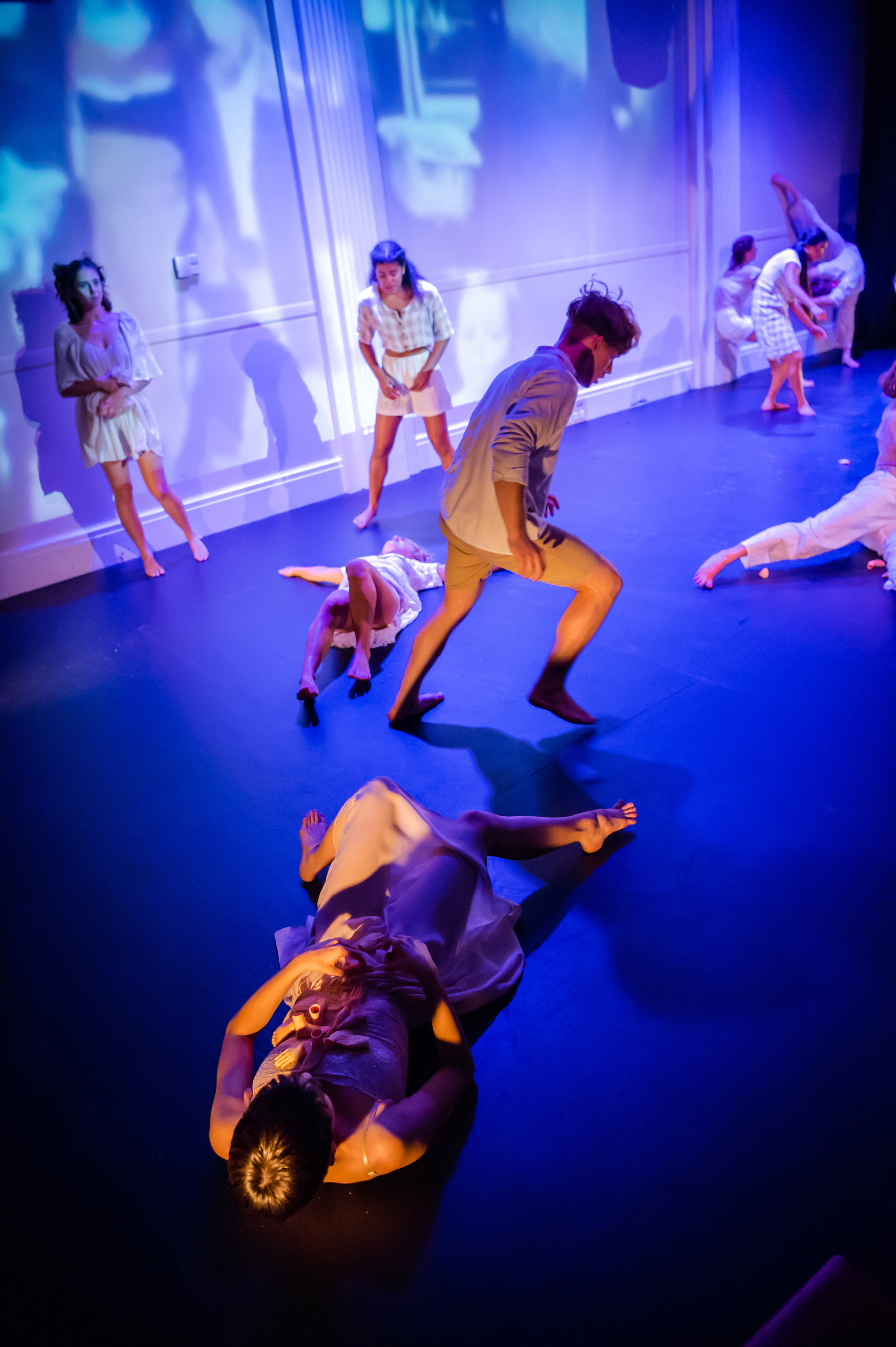
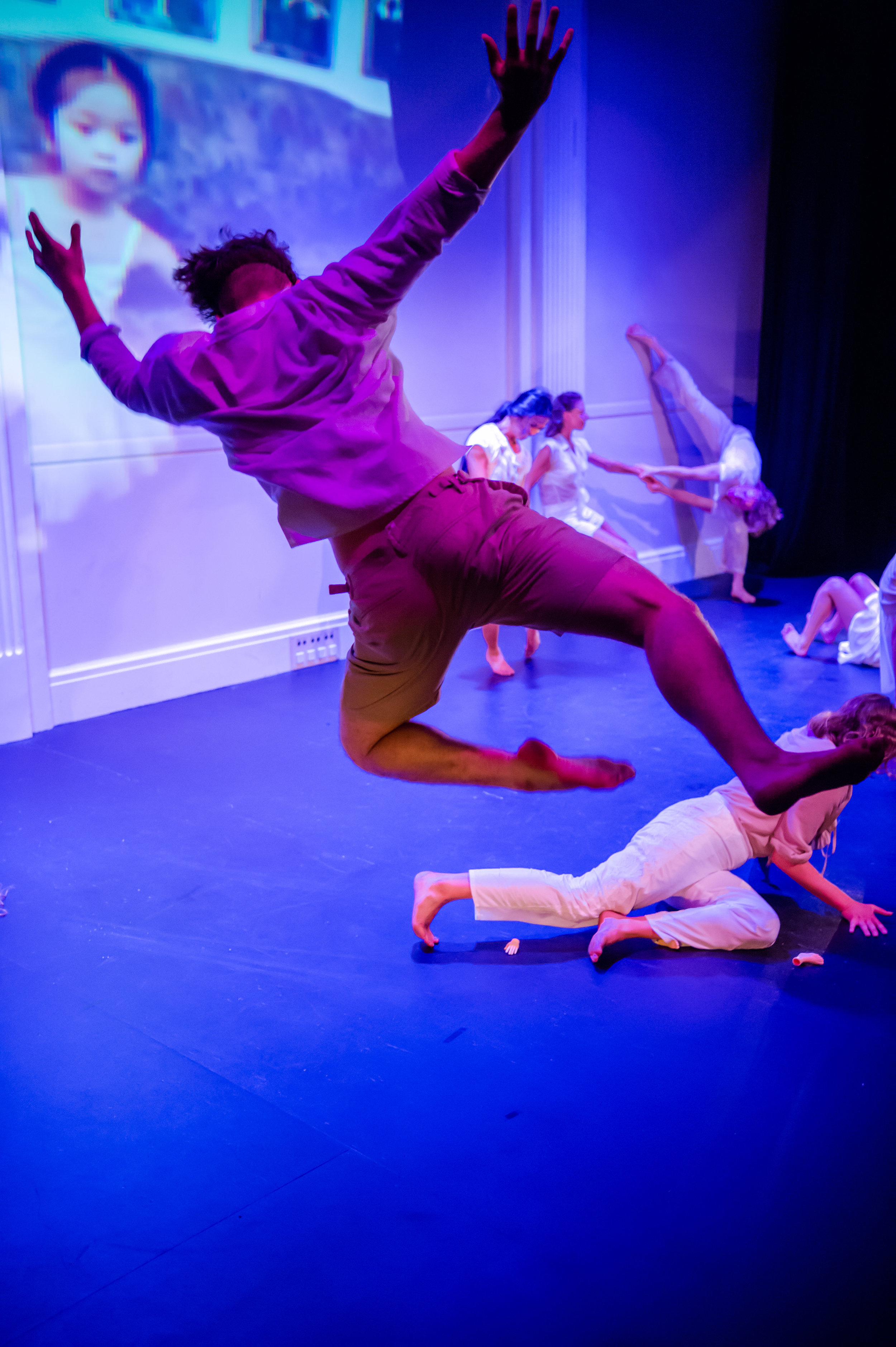
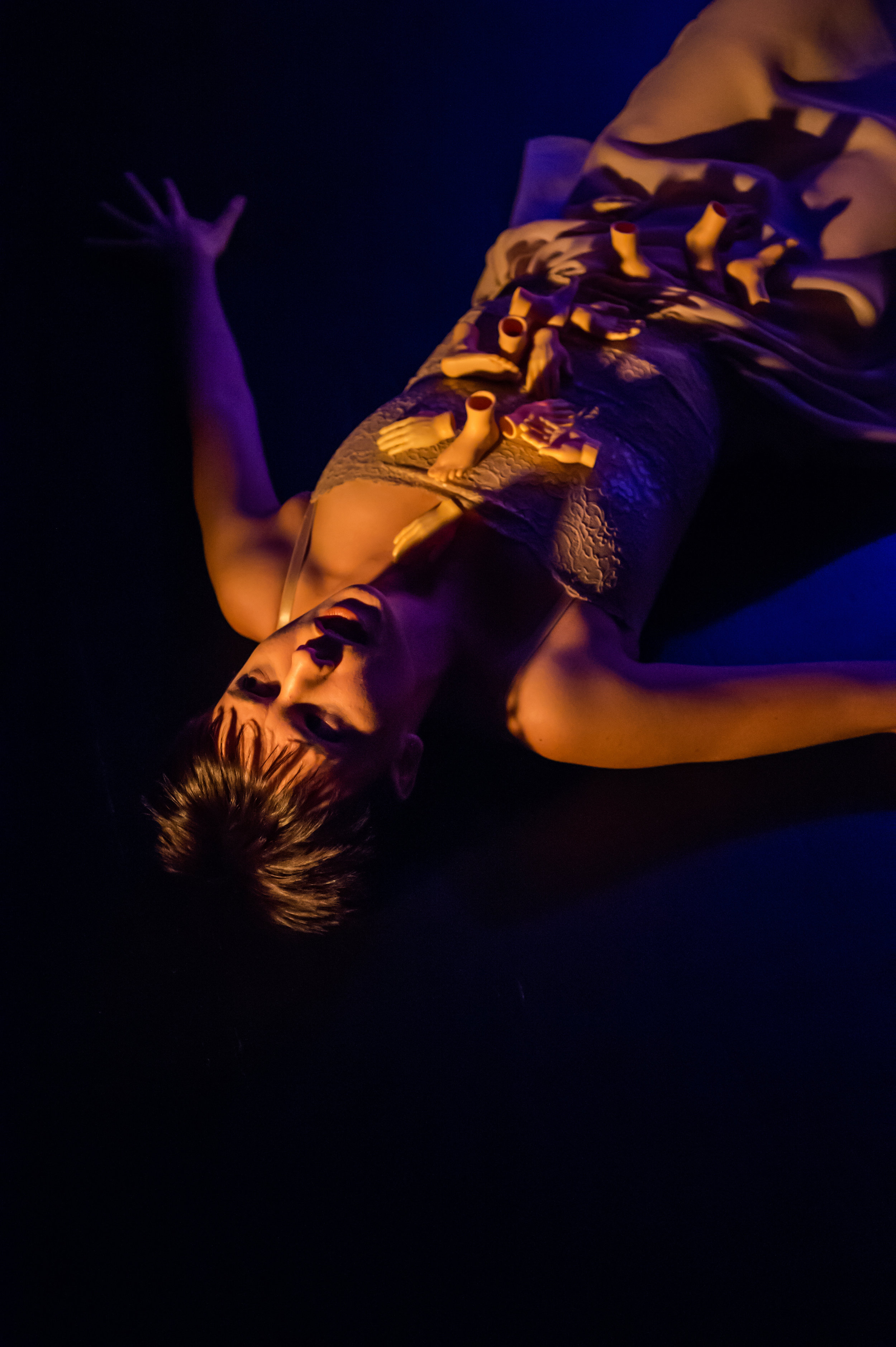
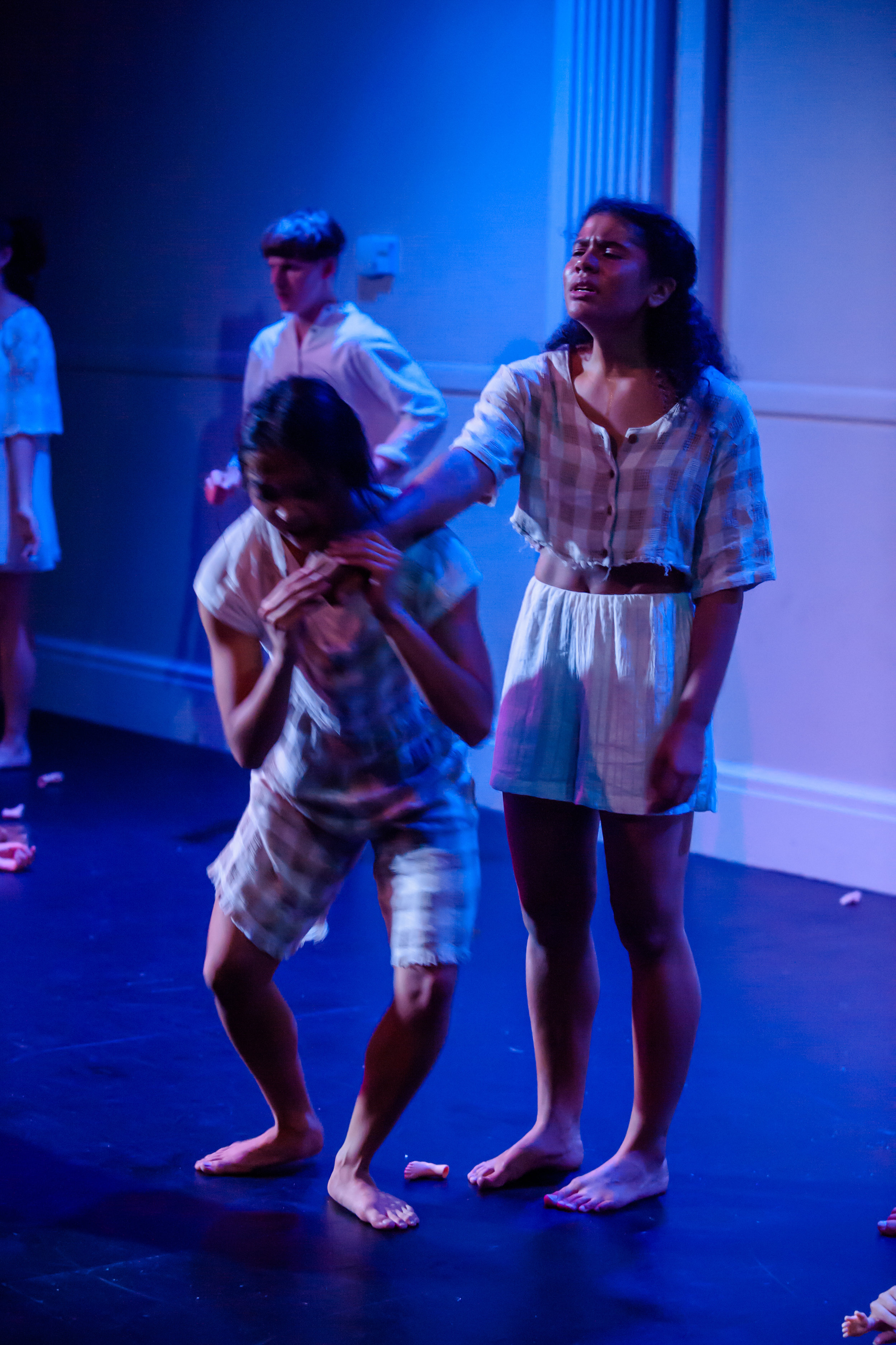


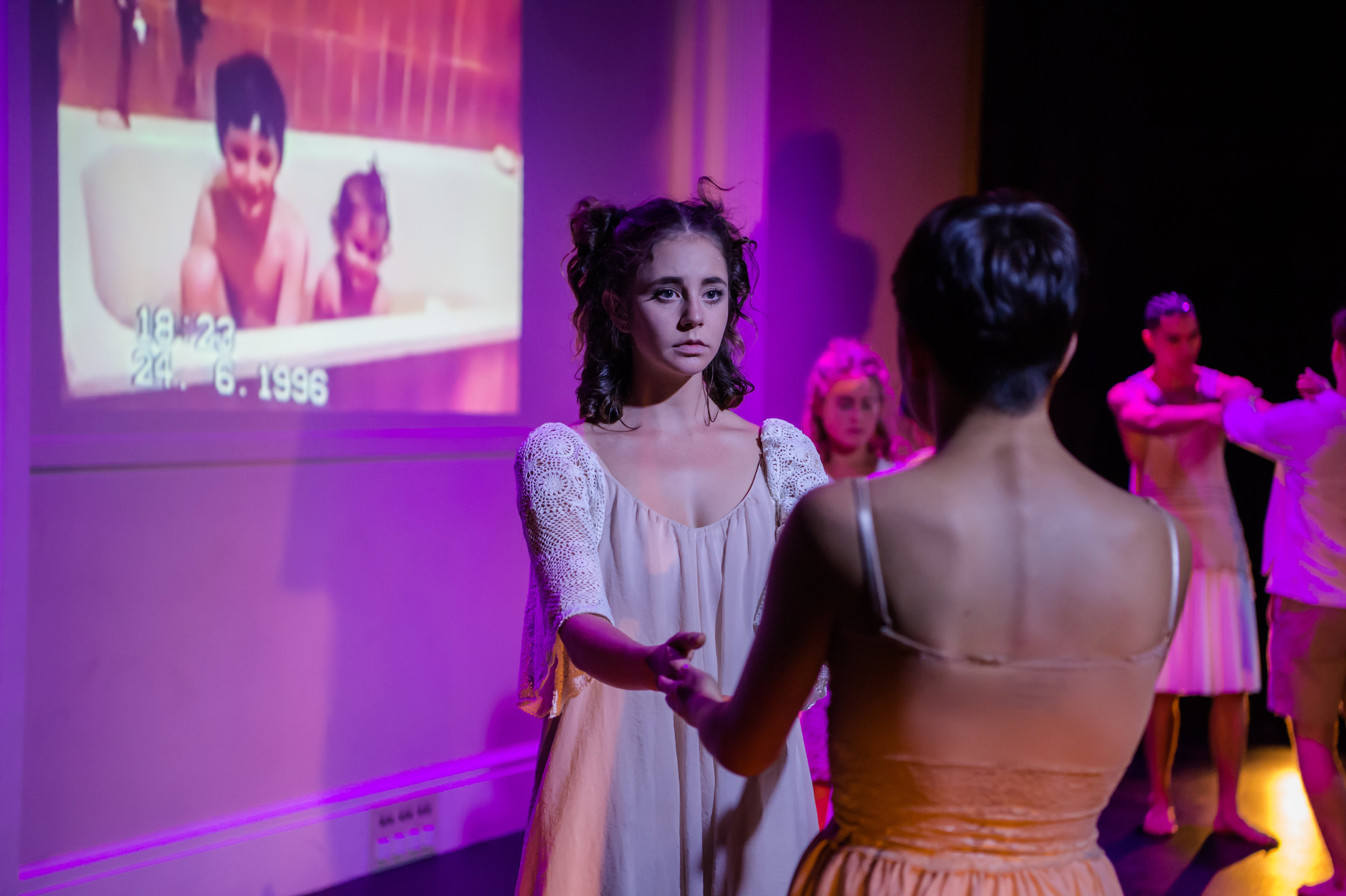
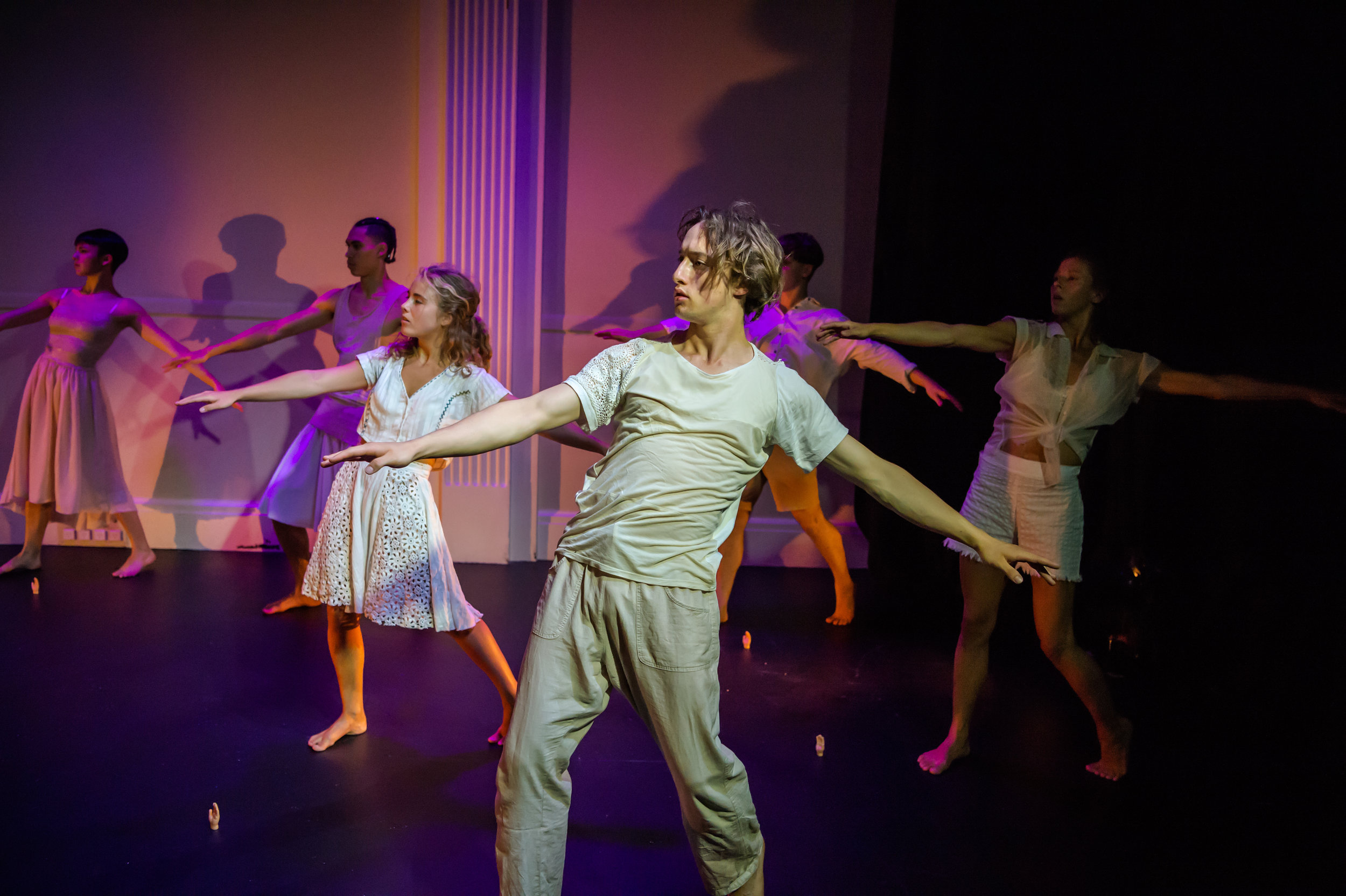
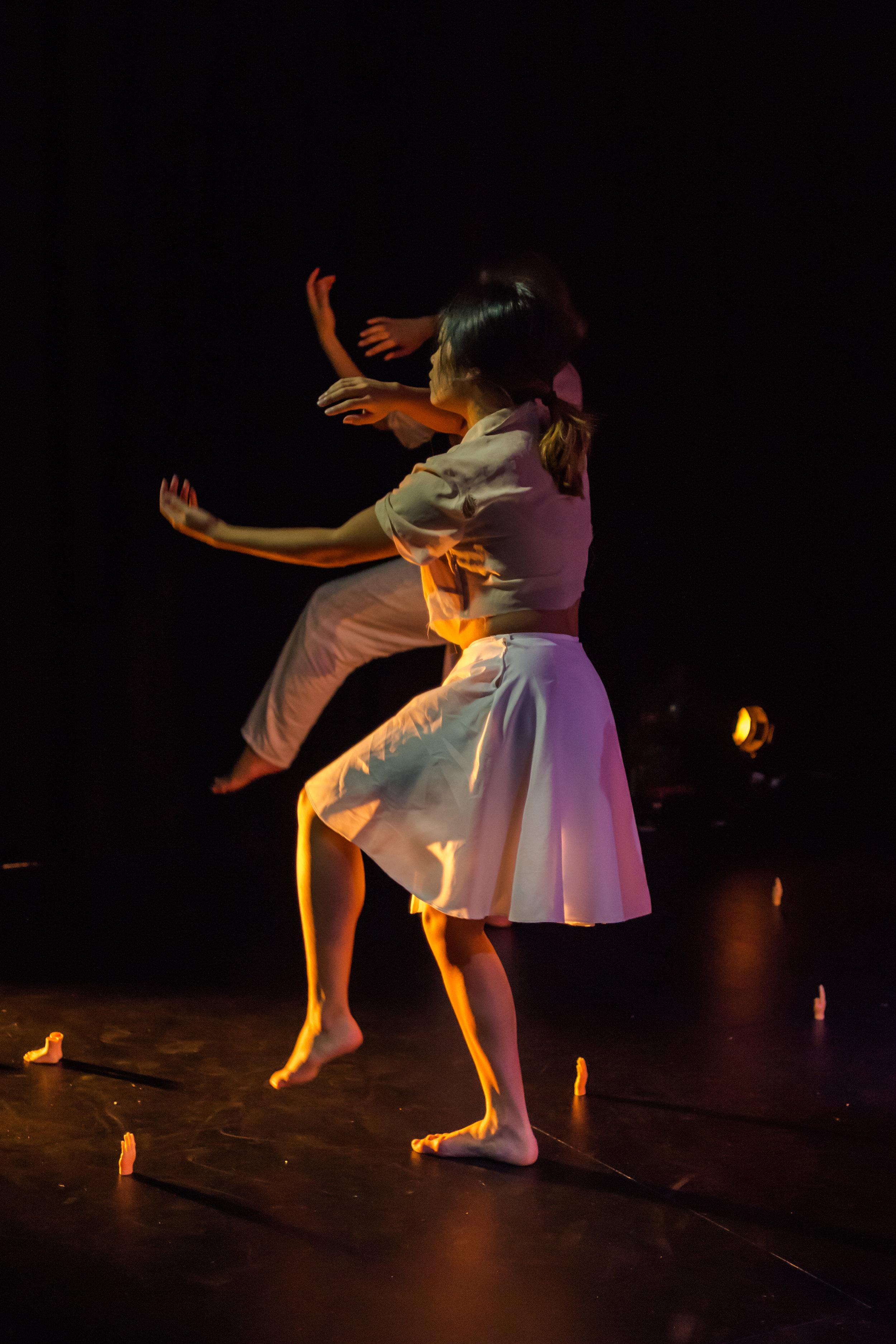

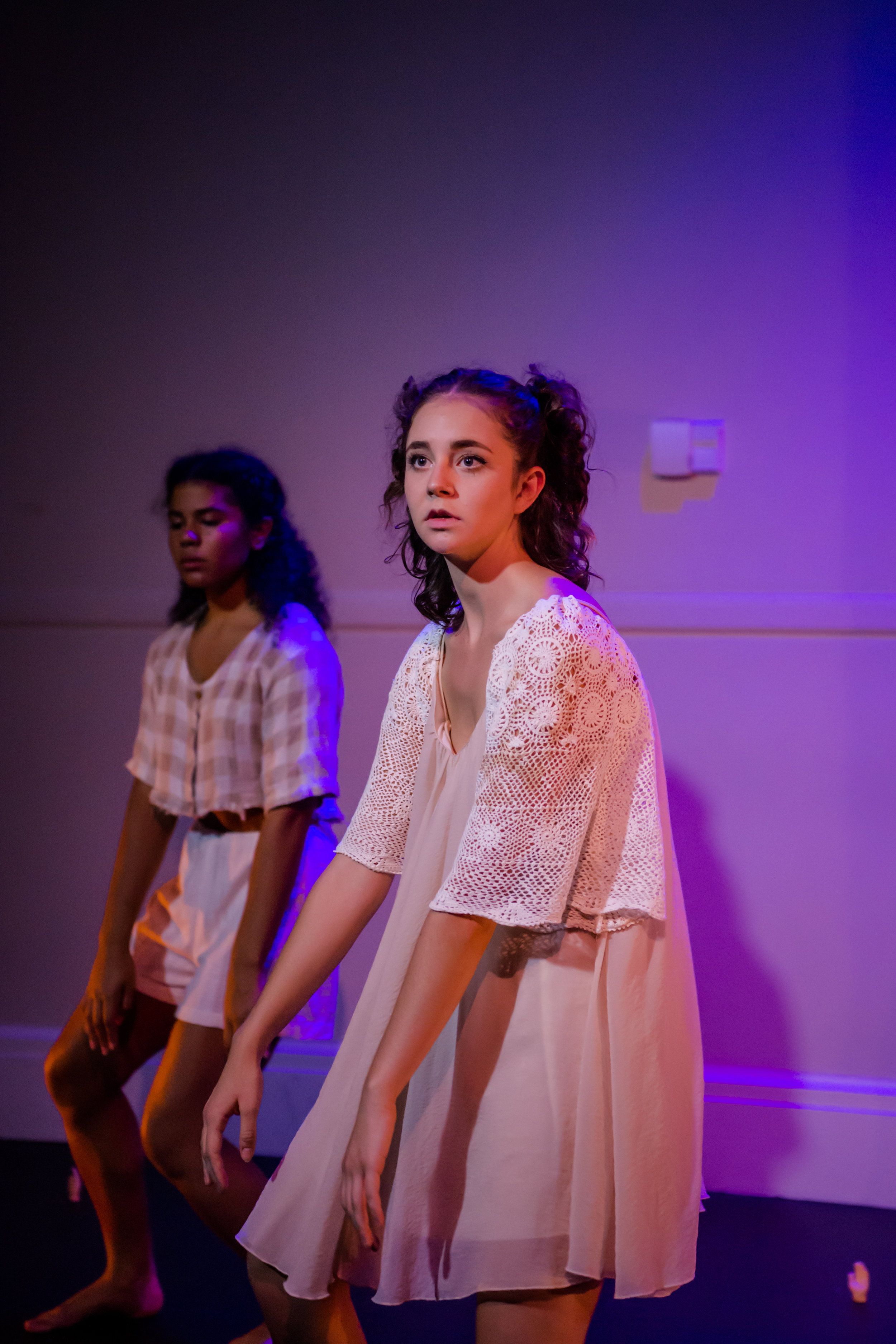
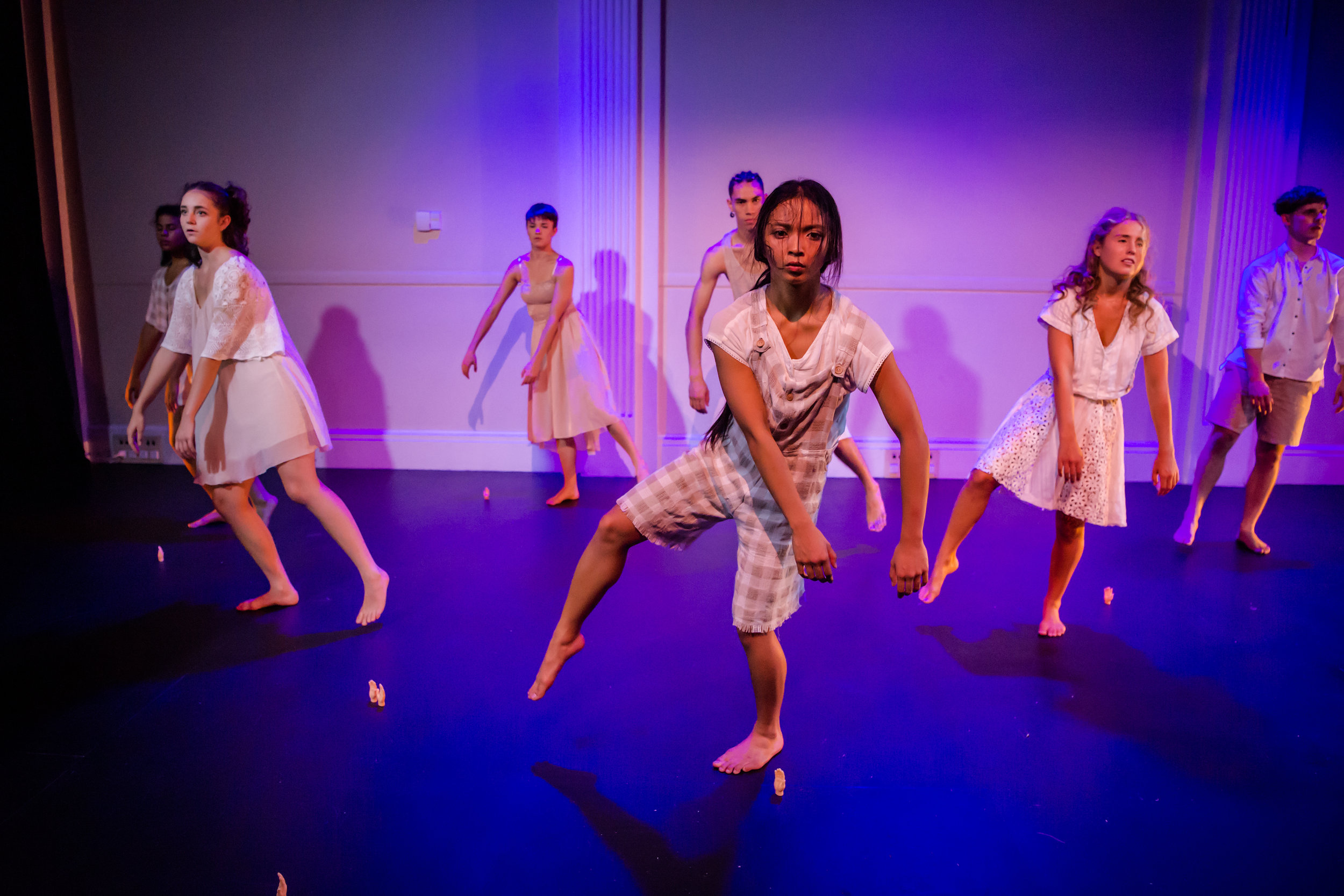
REVIEWS
Fear of Eggs - House of Sand
DANZ Anna Bate, 23 March 2018
Fear of Eggs is my first encounter with the work of House of Sand, a dance-theatre cohort led by choreographer Eliza Sanders and director Charles Sanders. During opening night, at BATS I enter the theatre, passing eleven performers, who are huddling and cuddling, alongside a collection of tiny porcelain hands and feet.
The huddling and cuddling is cave like. These formations of bodies in soft whites, have central figures, protecting, stroking, and drawing their kin back in. I read “...allow the...images...to go to work on your associative mind...”, and I think, “no problem, I can do this”.
A still image of a girl in a white tutu, in a living room, dominates the back wall. Thematic clarity resonates in these initial offerings, as the artists pass through a terrain of childhood memories, nostalgia, and relationship to child-self and parents.
The still image moves. It is a brilliant performance. This kid is totally in it, dancing in a ballet-esque way, with exceptional deviations from the form. The live performers hover near the back and in hushed tones spill what may be past childhood memories. I wish the work had started here.
Fear of Eggs continues to play out in a series of seven or so scenes. They traverse in predominately full ensemble acts, with shared intentions and a notable togetherness. At times individual narratives take hold, as performers, simultaneously, re-enact and reimagine episodes from a child-like realm. The eleven performers remain on the stage throughout, as do the hands and feet.
Such scenes include a full ensemble, breathy, expressive, low level, bouncy, rhythmic hustle. This enlivens a state of being continually on the cusp of something new. It reminds me of a zone I often see children in; almost ‘there’ without yet knowing where there is. In another act, a solo of associative word and movement is performed by Christina Guieb with exceptional sophistication. She is at once child and adult. Concluding the show is an engaging deep, slow, meditative, group sway. It has a caring and nonchalant calm about it. The spoken text sits here with ease, where its initial outing in the opening huddle felt self-conscious. All scenes are supported, and sometimes driven, by emotively playful music.
Touch is a feature of this work that lacks clarity for me as a viewer. From the stroking mothers, to the lovers, to the intimate face to face huddles. Its presence is a necessary component of the work, but the subtitles in quality and intention need attention, as do the audience’s role in witnessing these acts. Elsewhere, performative intentions are remarkably clear in every body. There were many brilliant individual and collective moments; the willingness of the performers to access, explore and play with un-nameable physical states startles me.
There is sophistication in the thinking that underlies the creation of Fear of Eggs. As they embrace their childhood histories, the ‘adult-self’ is always fully present. To be adult, in relation to past-child-selves, creates an opening that is intriguing and satisfying to watch.
A HIGH LEVEL OF COMMITMENT AND SKILL
TheatreView Tim and James Stevenson, 21 March 2018
Anyone with an interest in modern dance should hustle on down to BATS theatre to catch this production. It's articulate, polished, thoughtful, often beautiful and always intriguing; challenging the imagination while pleasing the eye.
Co-director / dramaturge Charles Sanders' notes tell us that Fear of Eggs explores the joy and nostalgia of looking back at childhood and examining how it shapes bodies and minds. This is a broad brief which the production feels free to interpret loosely. The dancers give us a series of sustained images which suggest aspects of human relationships: friendship, childhood, family, sexuality, nostalgia, the limitations of communication. These images, or passages, are linked together in a loose narrative arc which gives the show a nice sense of shape and purpose.
Not everything we see on stage lends itself easily to labelling and defining. This is probably as it should be and dovetails neatly with the directors' intentions. Charles Sanders' notes invite us to approach the show in a spirit of open imagination, relating its content to our own memories and experiences.
The show makes good use of what, for the venue, is a large company of dancers. Eleven dancers on stage in BATS' Heyday Dome can – and do – create an impressive visual impact. The show's most satisfying moments are those where the company is working together to create a dynamic collective image, whether it's of chaotic movement, parodic glee, or stately pageant.
There are also moments when there's so much going on that the audience doesn't know which part of the stage to watch – maybe a deliberate metaphor for how we perceive reality?
Not all the highlights feature the whole company. One of the show's outstanding passages is a long, sensual, Laocoönian duet which twines across the stage like a pair of loving snakes.
Fear of Eggs has a strong company who overall demonstrate a high level of commitment and skill. They are often required to act out extremes of emotion as well as dance; the results achieved are a credit to the individual dancers and their choreographer, Eliza Sanders.
The show is well supported by its visual display and lighting (Owen McCarthy), costumes (Monique Bartosh) and choice of music – everything from Mozart to Skeeter Davis.
We didn't see House of Sand's previous Fringe shows – Pedal.Peddle (2015) and Castles (2016) – so can't compare, but their offering this year stands out as a combination of successful conception and execution.

